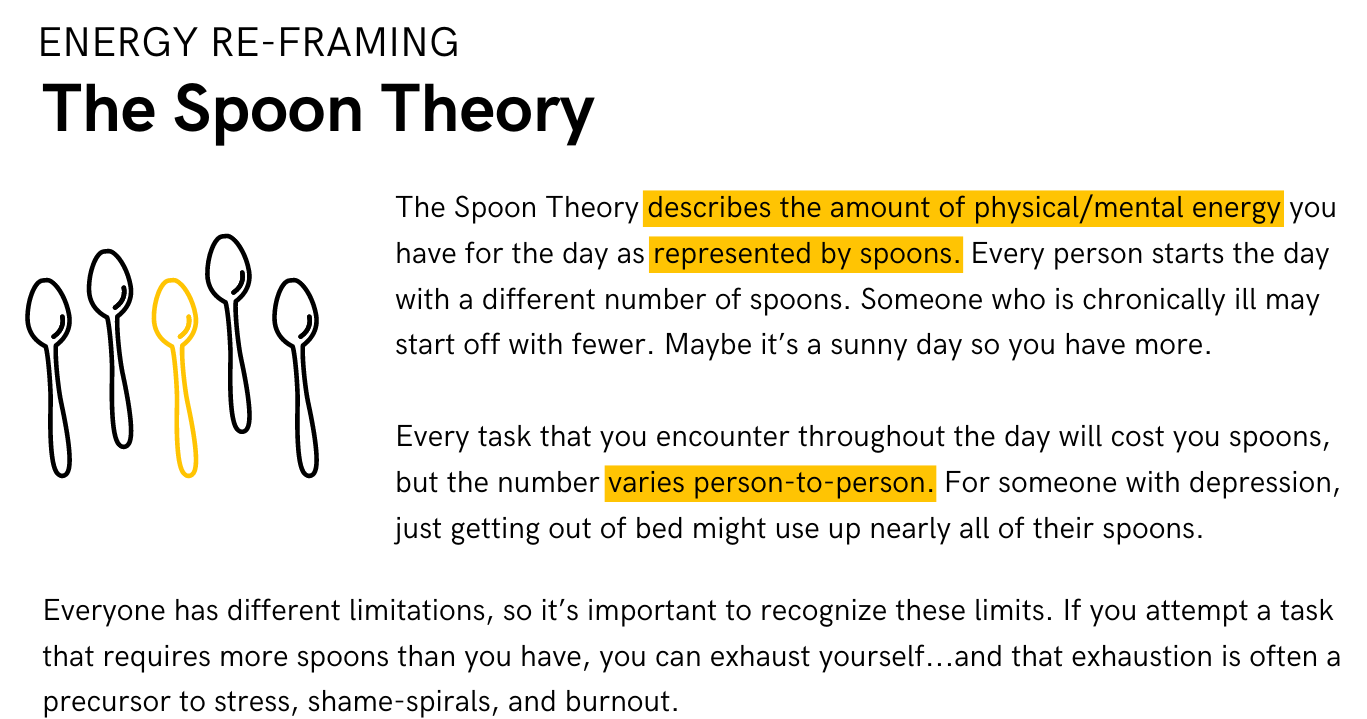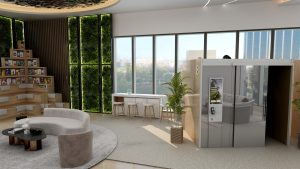Ebbflow
Maggie Bouchard
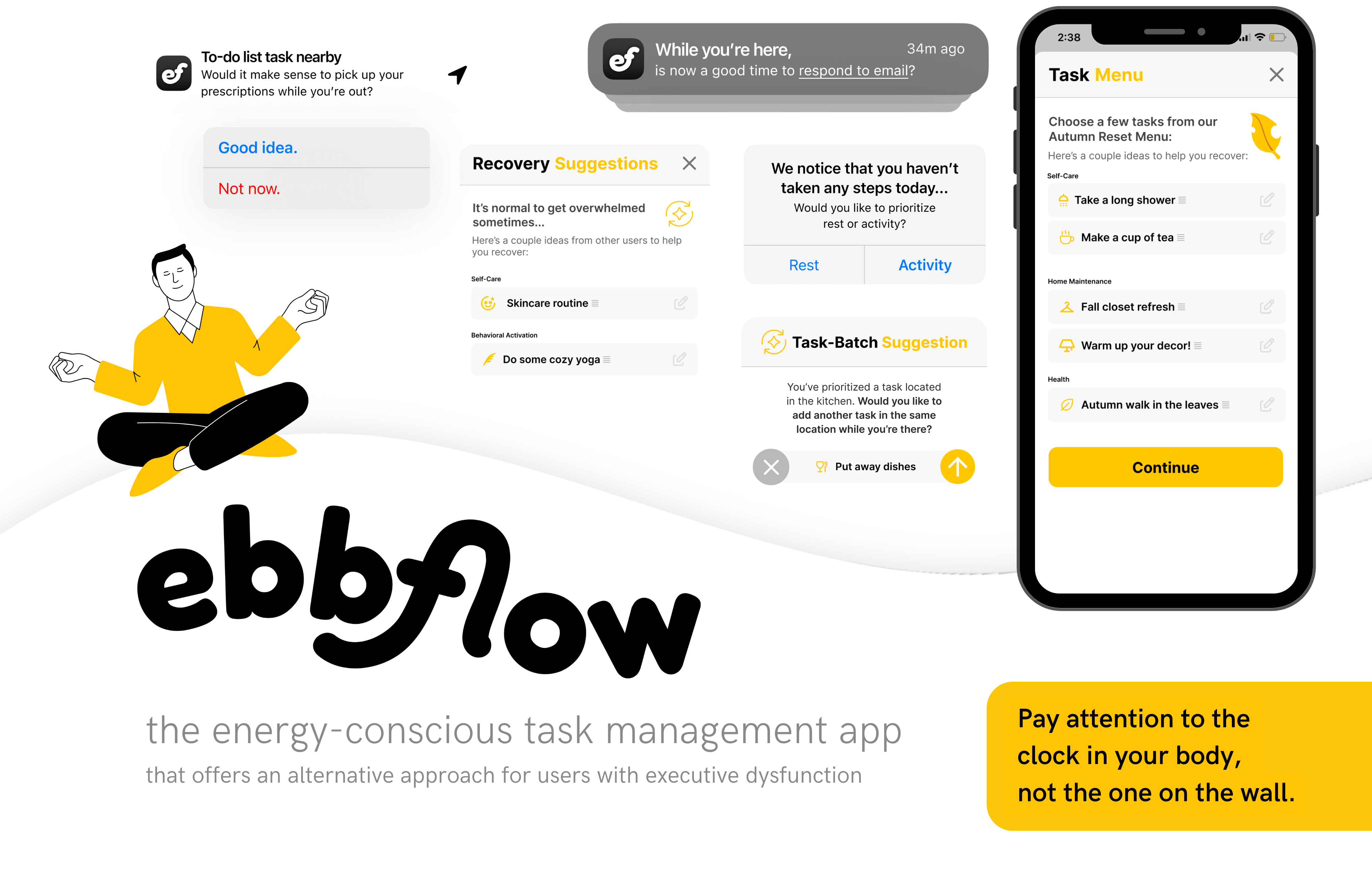
Context
Executive Dysfunction is a cognitive phenomenon characterized by difficulties with planning, organizing and performing tasks.
It’s not itself a diagnosis, but often occurs as a symptom of many other conditions, like Autism Spectrum Disorder, Attention Deficit Disorder, Dyslexia, Depression, Alzheimer’s, head injuries, and more.
Executive dysfunction is also recognized under the umbrella of neurodiversity, which refers to the range of different ways that brains function and process information.
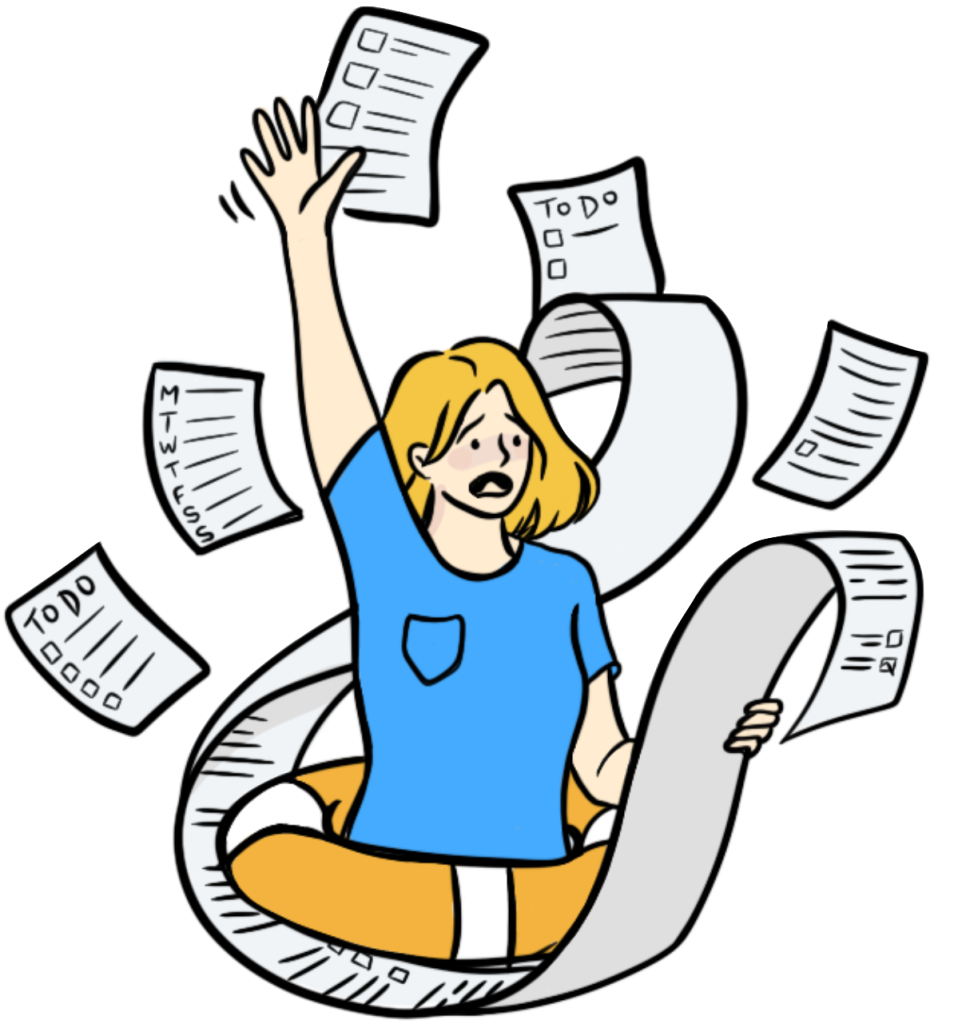
The Problem
Those of us with executive dysfunction are often encouraged to make a plan or structure to make it easier to manage our tasks. The problem is that these tools are demanding and require energy that we don’t always have.
Products like Apple Calendars, Notion, ToDoist, and even our physical day-planners ask us to do too much of the leg work in order to reap the benefits of using them…and require this effort constantly. You’re asked to manually input your tasks and prioritize them. Then you’re expected to do the same the next day and the next, in perpetuity. This process very quickly becomes a task itself, adding to the cognitive load of individuals already struggling with executive dysfunction, leading to frustration, disengagement, and ultimately burn-out.
Proposed Solution
My project explores an alternative to traditional time-management solutions, proposing a more intuitive and flexible approach that considers the unique needs of neurodiverse users. My proposed solution, an app called Ebbflow, re-frames the way we think about productivity…prioritizing energy over time-management, incorporating behavioral-therapy strategies, and features like task automation, contextual notifications, anticipatory recommendations, and an adaptive interface.

Research
I started with cross-functional discovery research to understand current market trends, user behavior and the limitations of existing solutions.
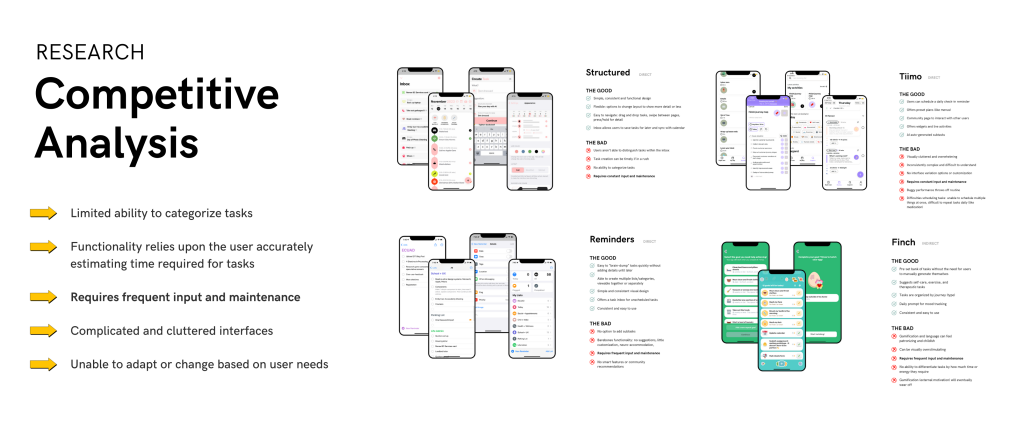
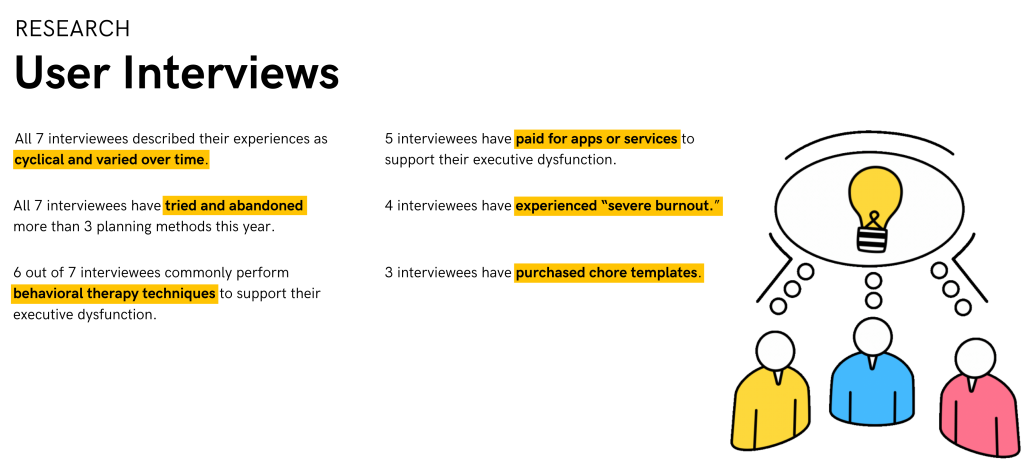
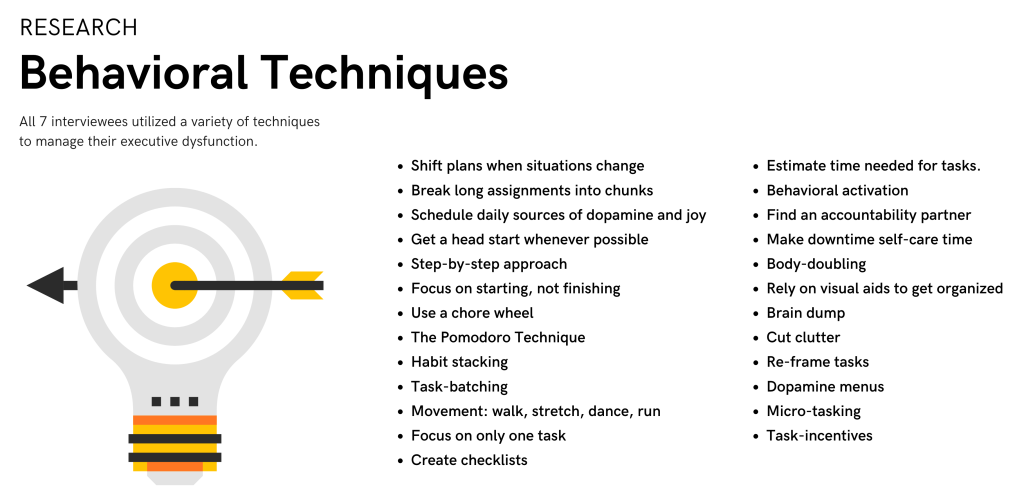
Synthesis
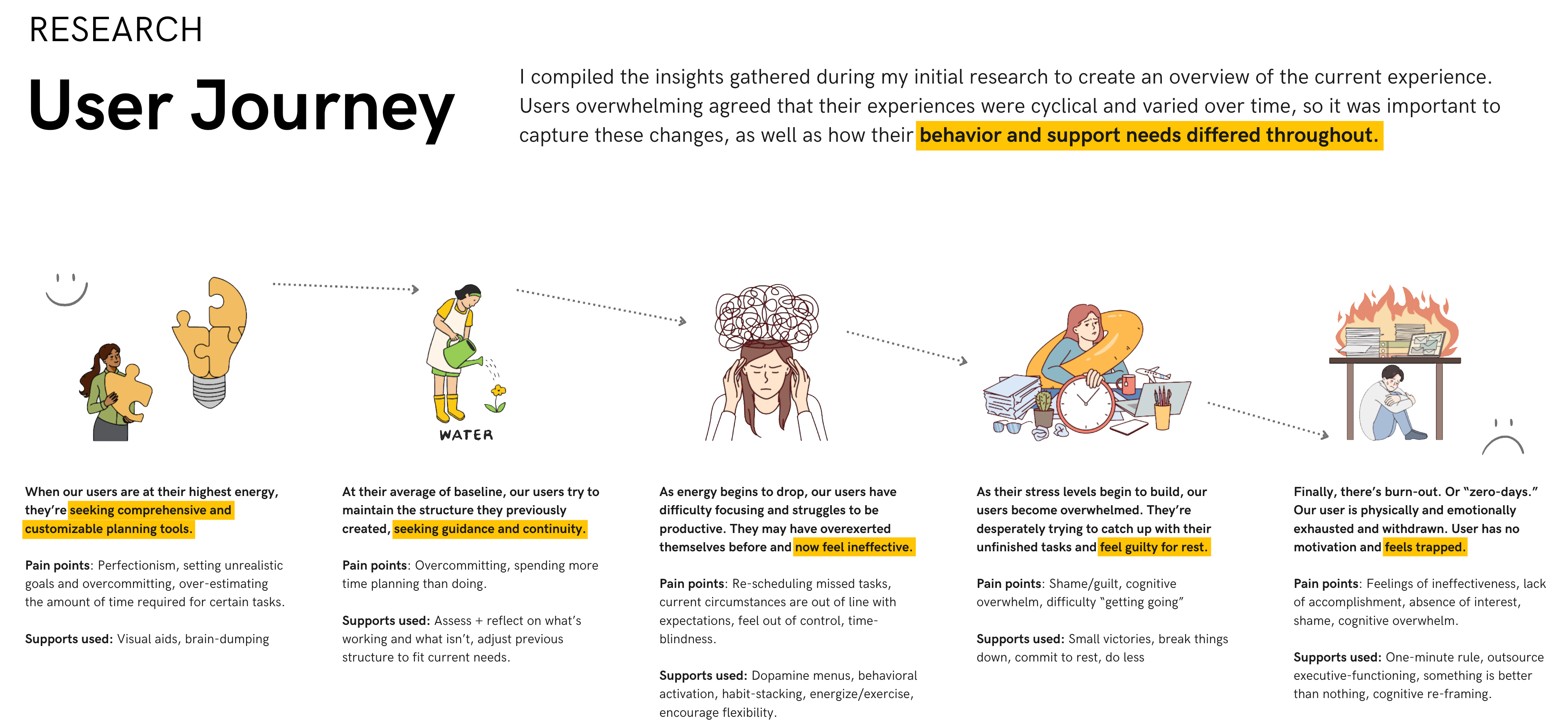
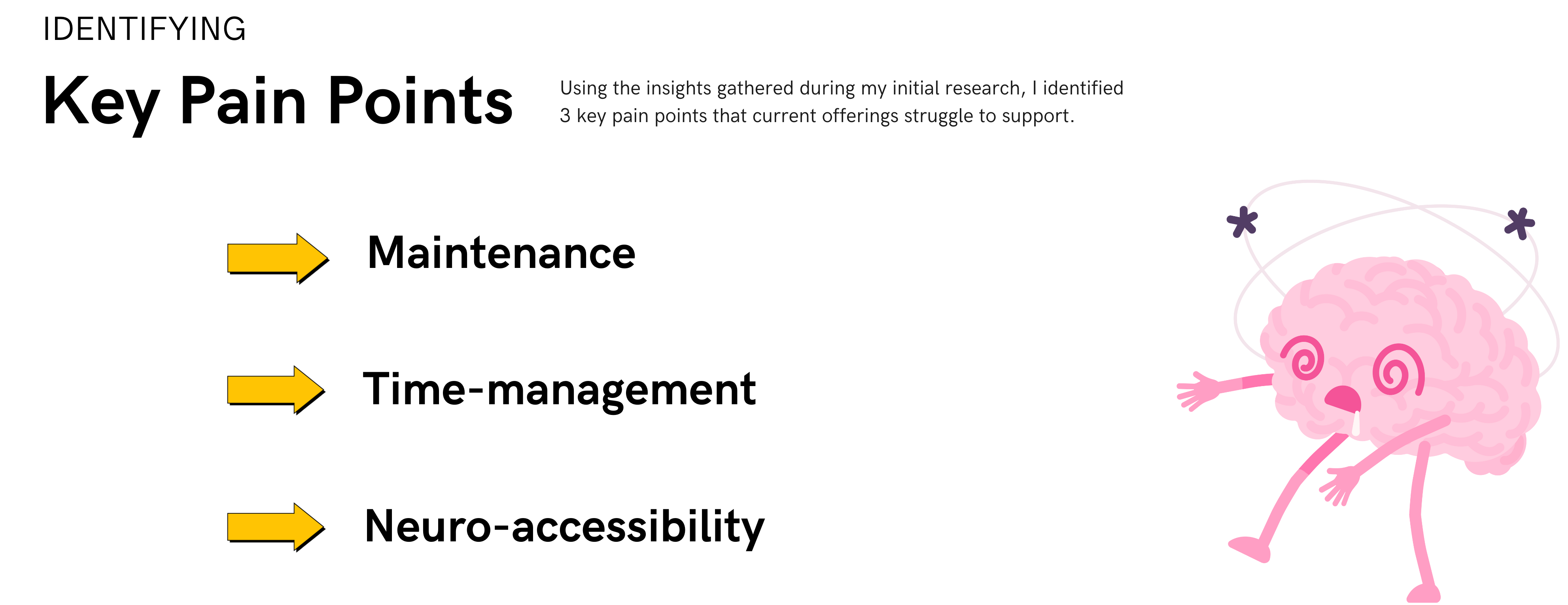
Ideation

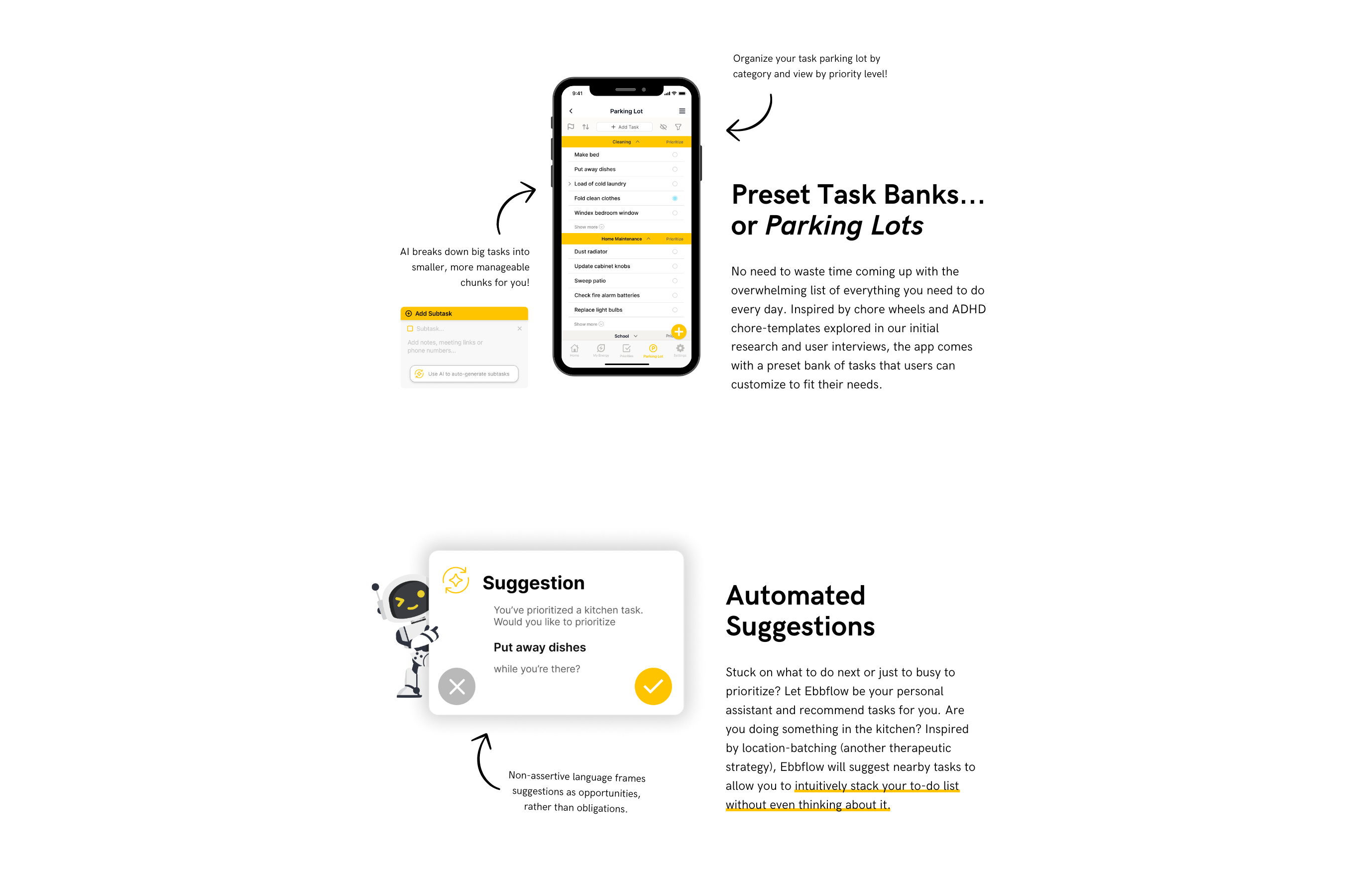




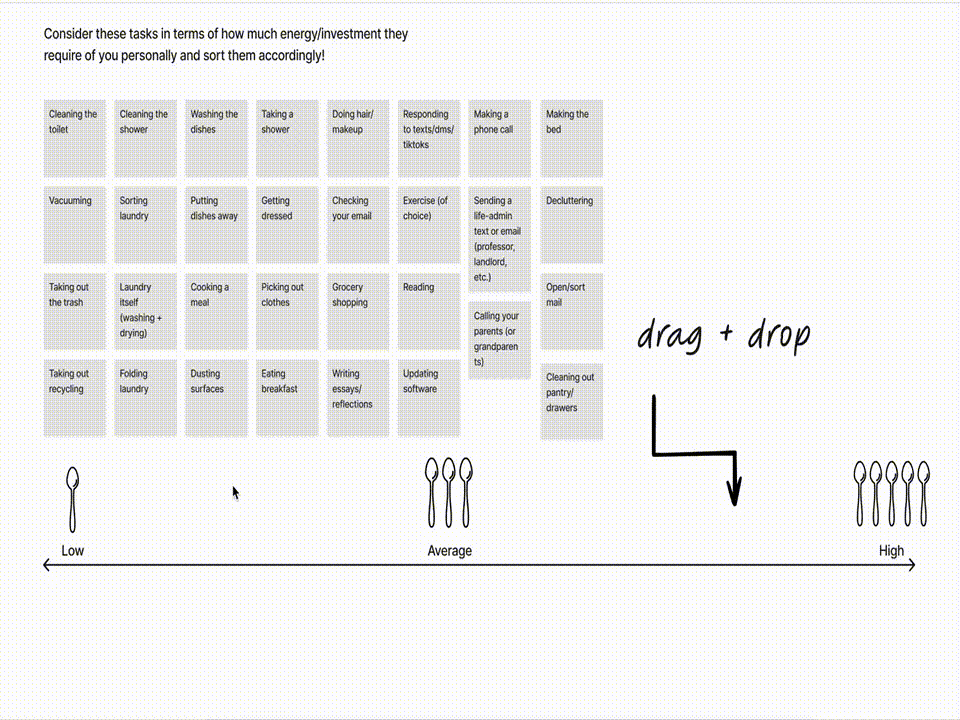

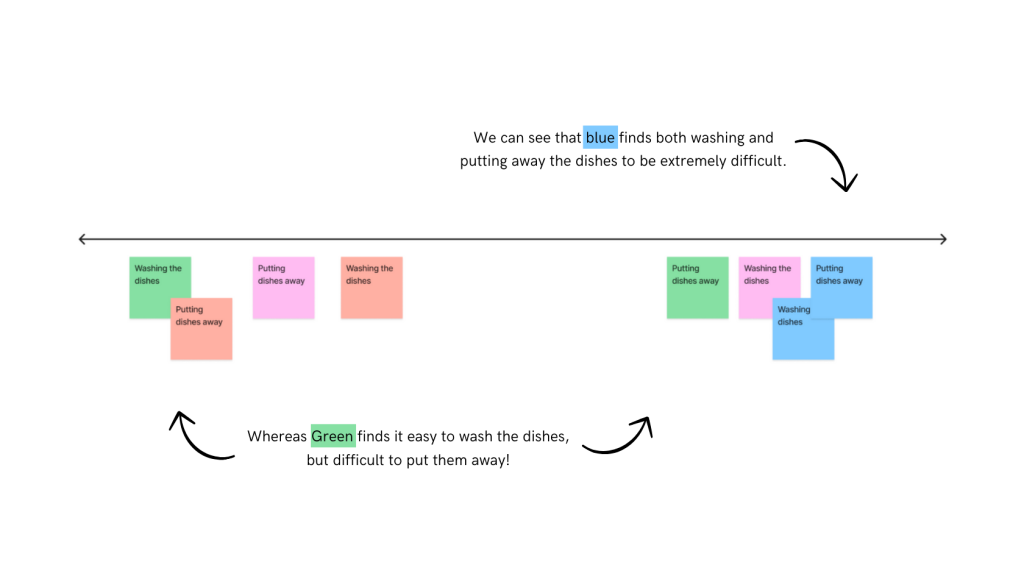

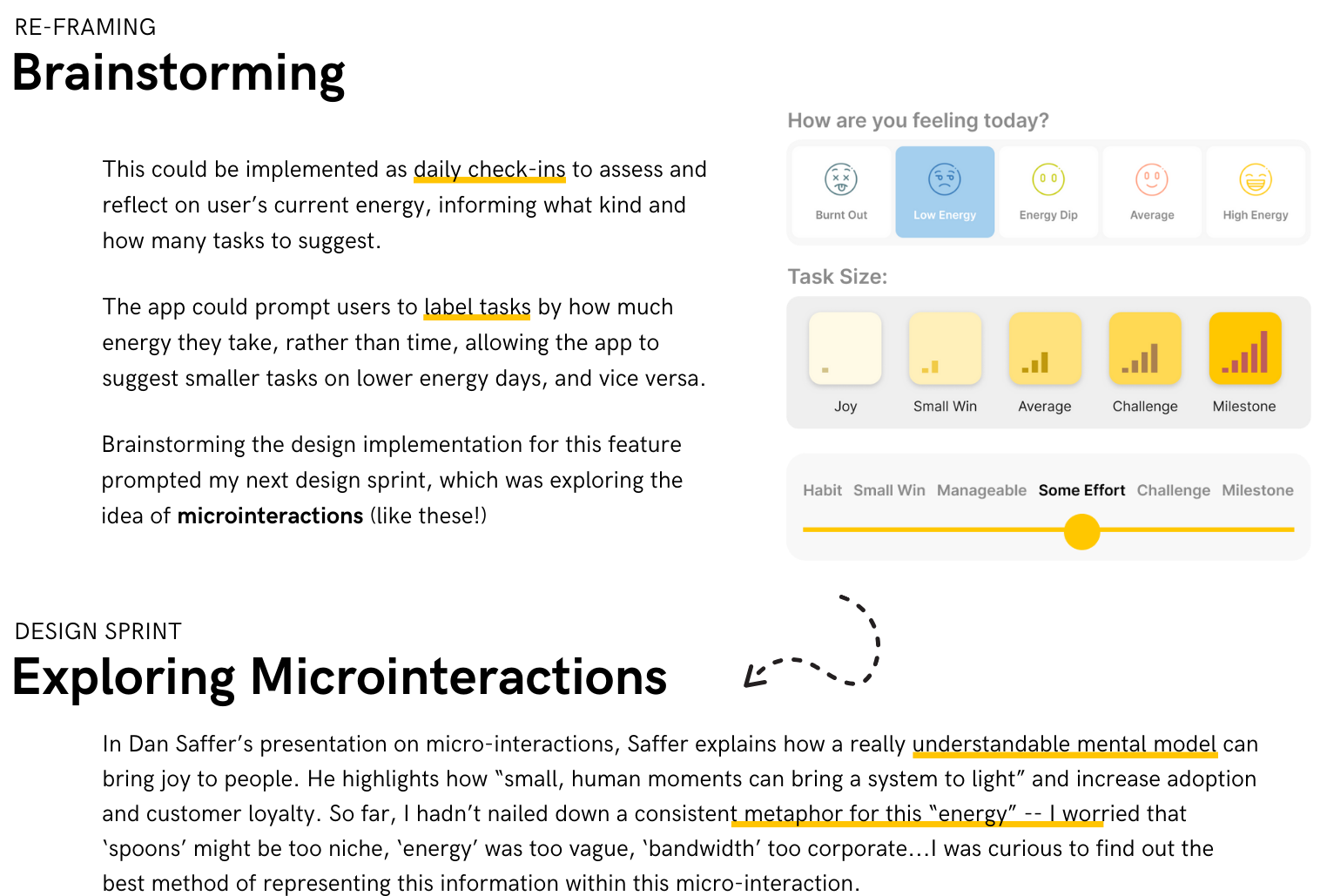
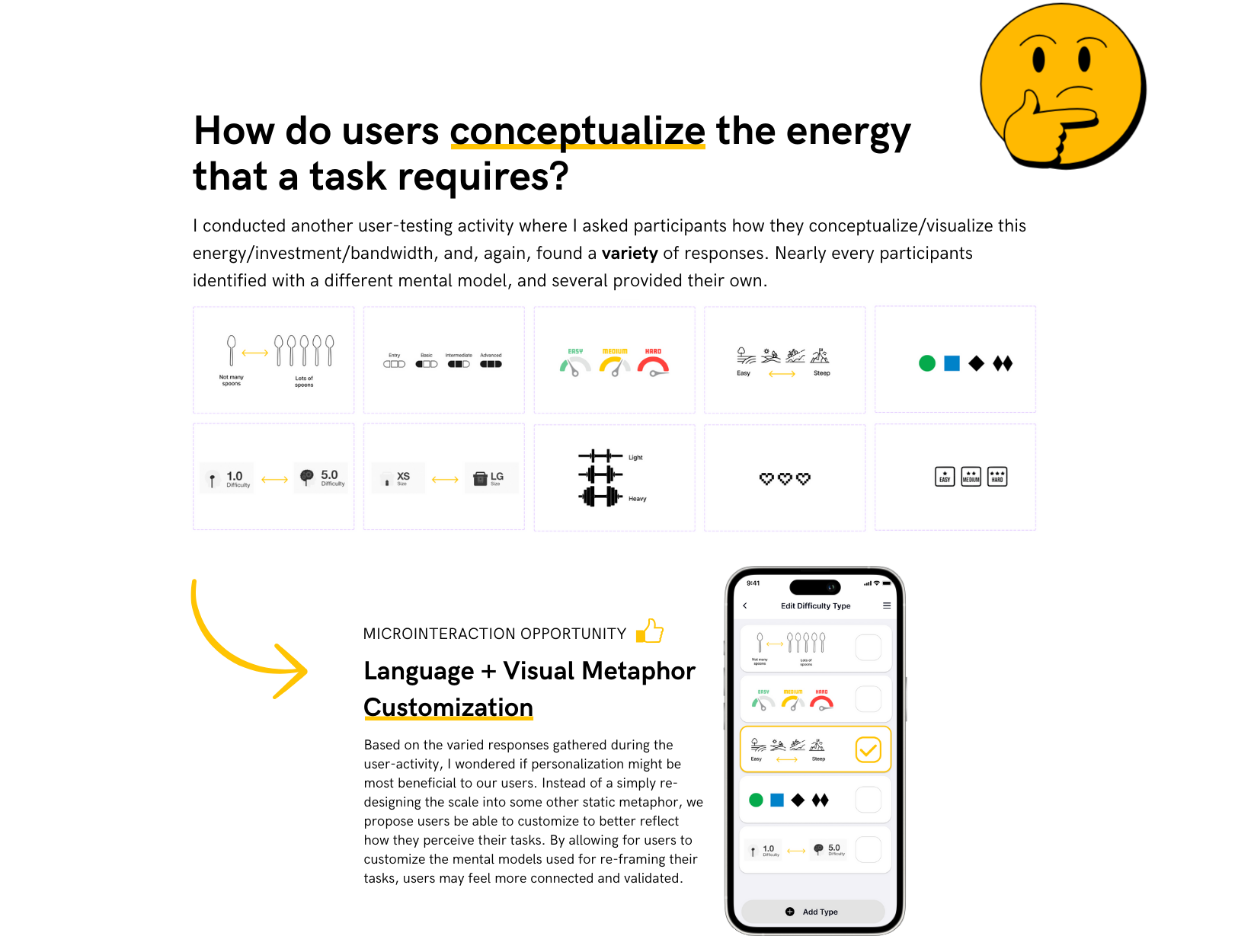
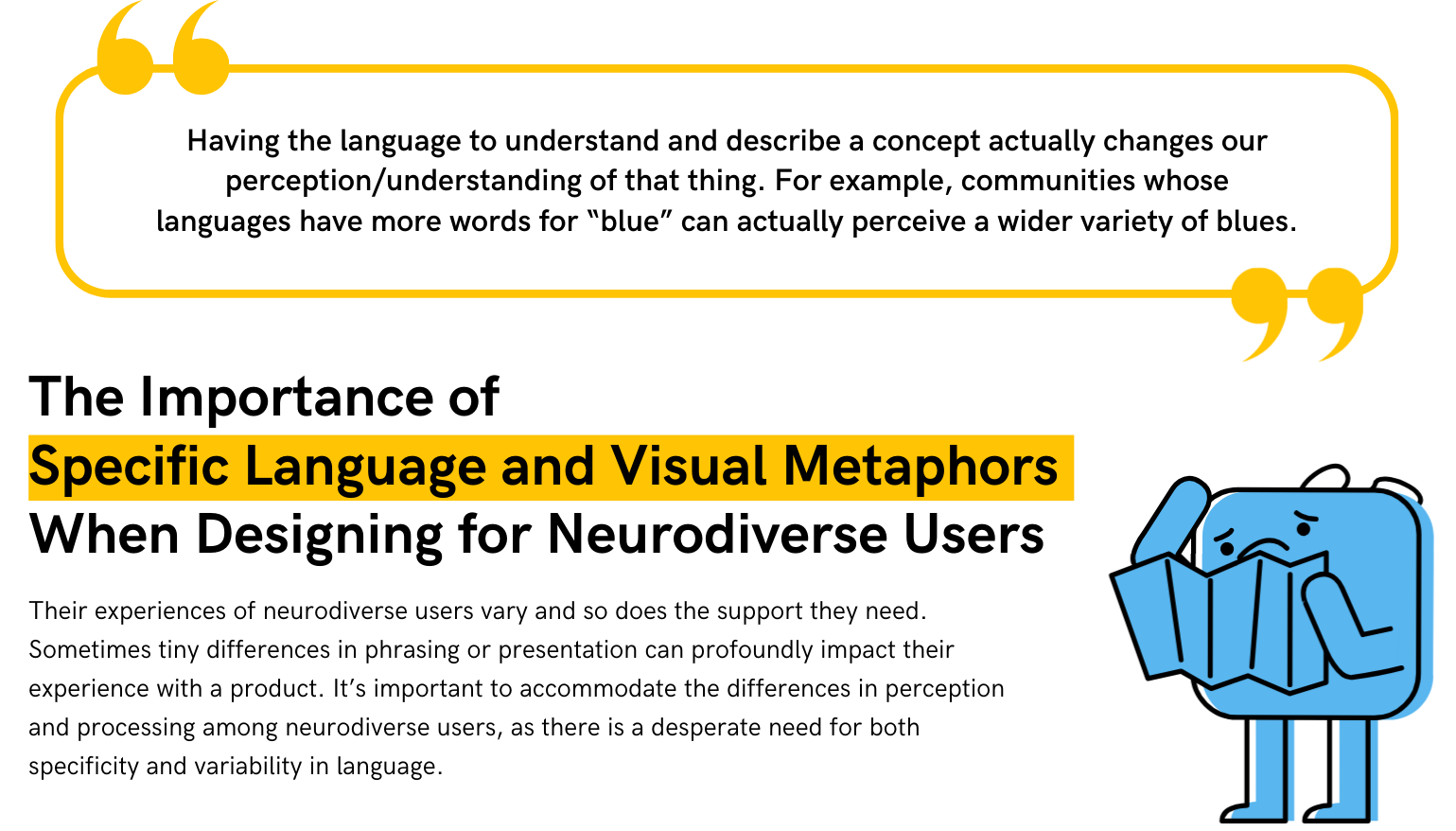
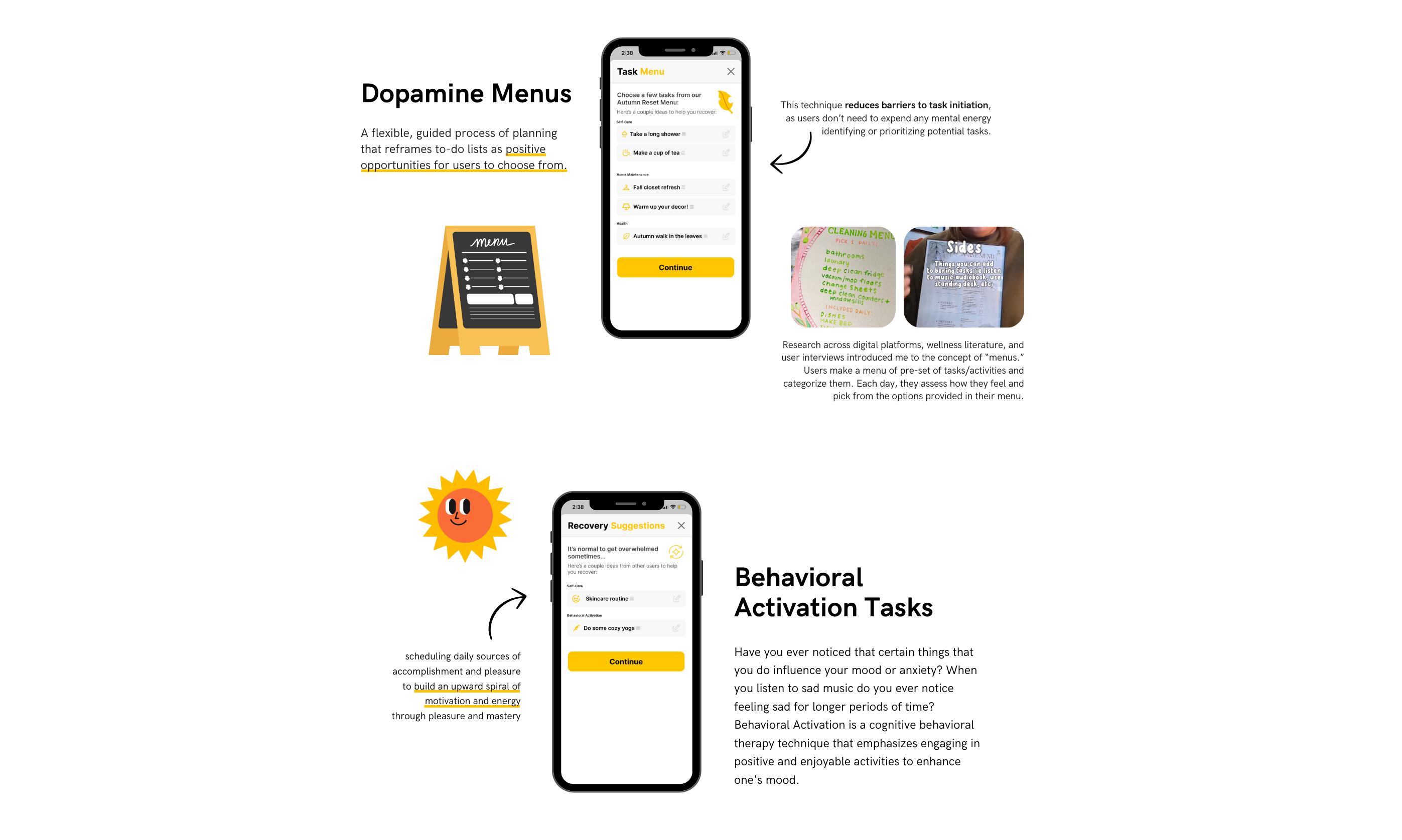
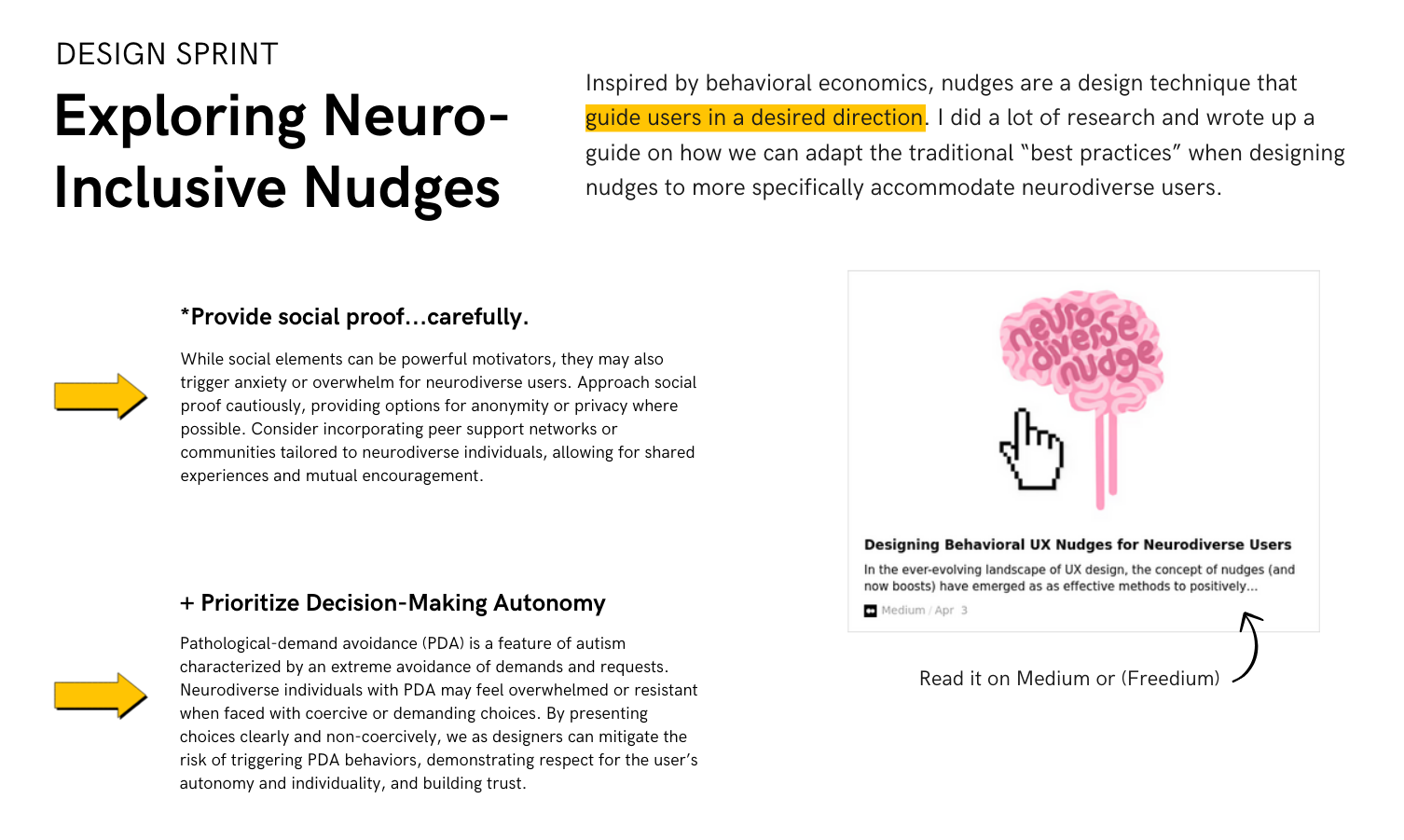
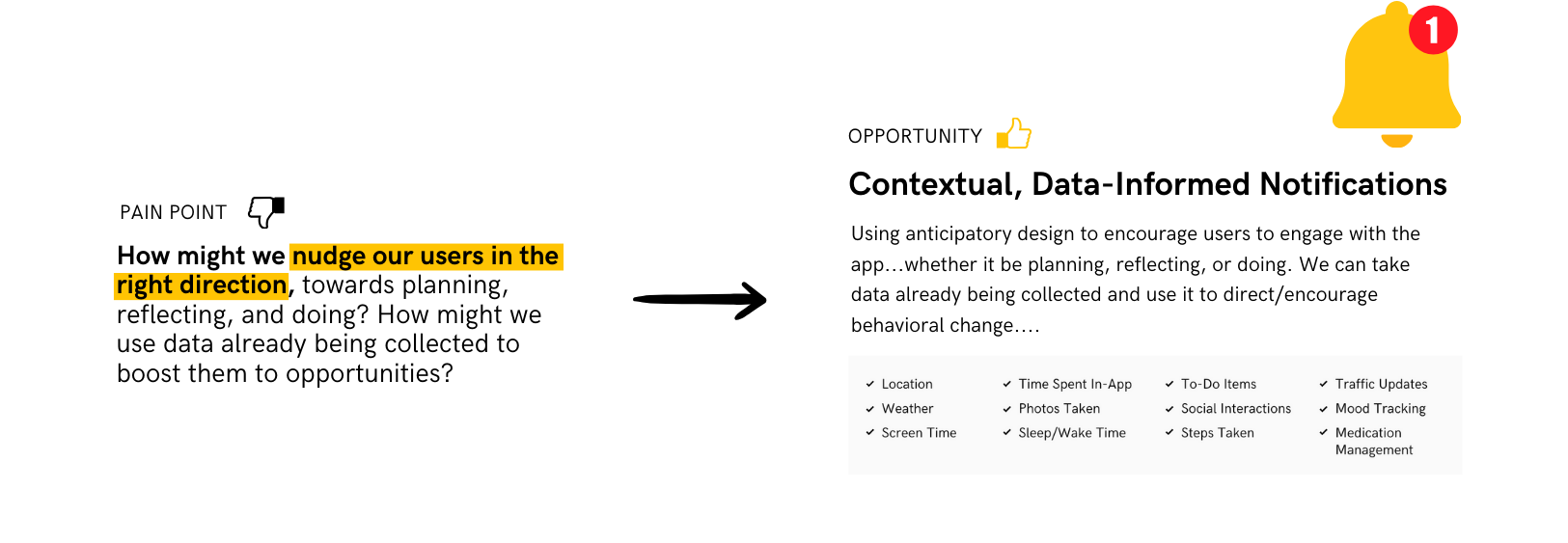
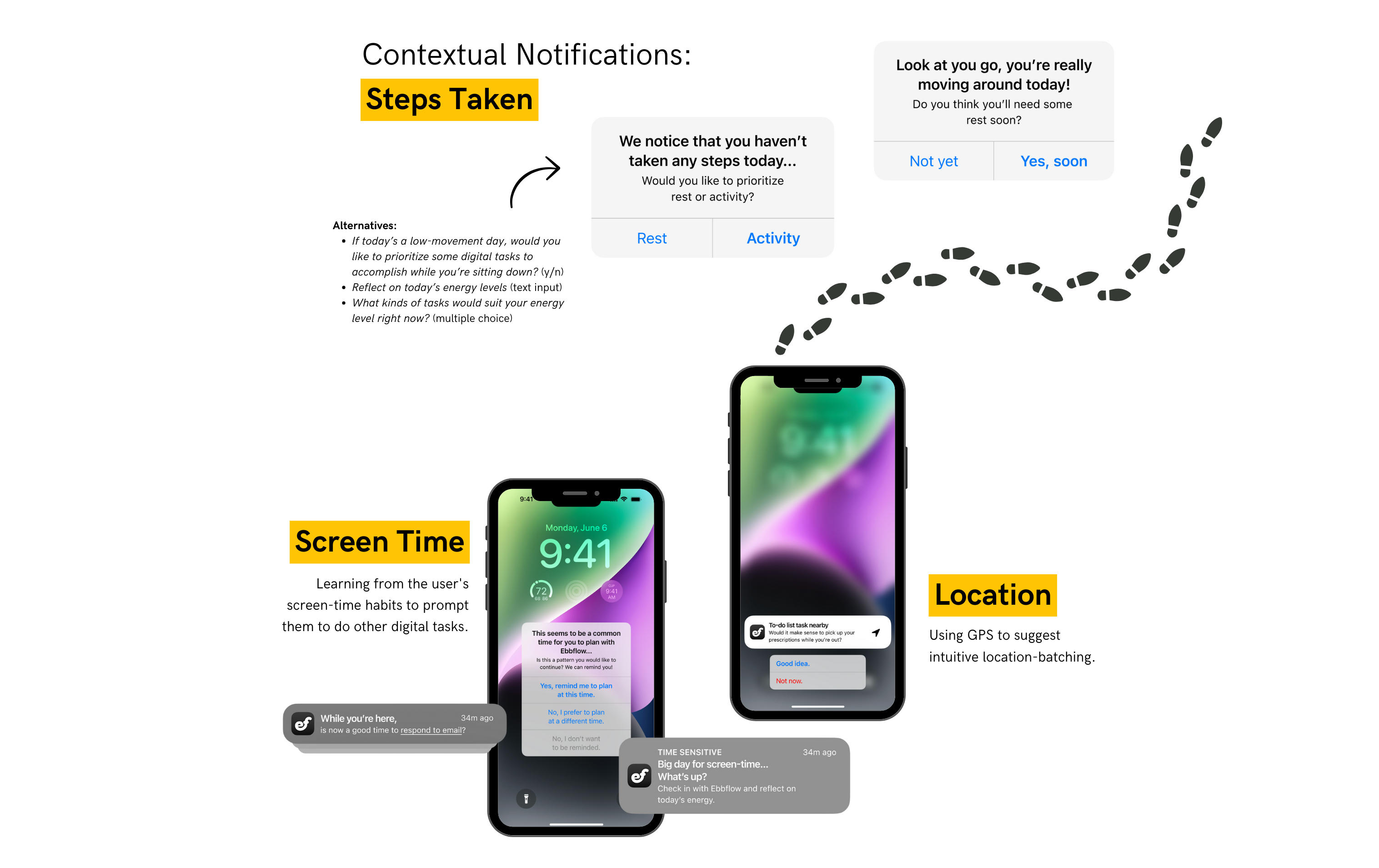

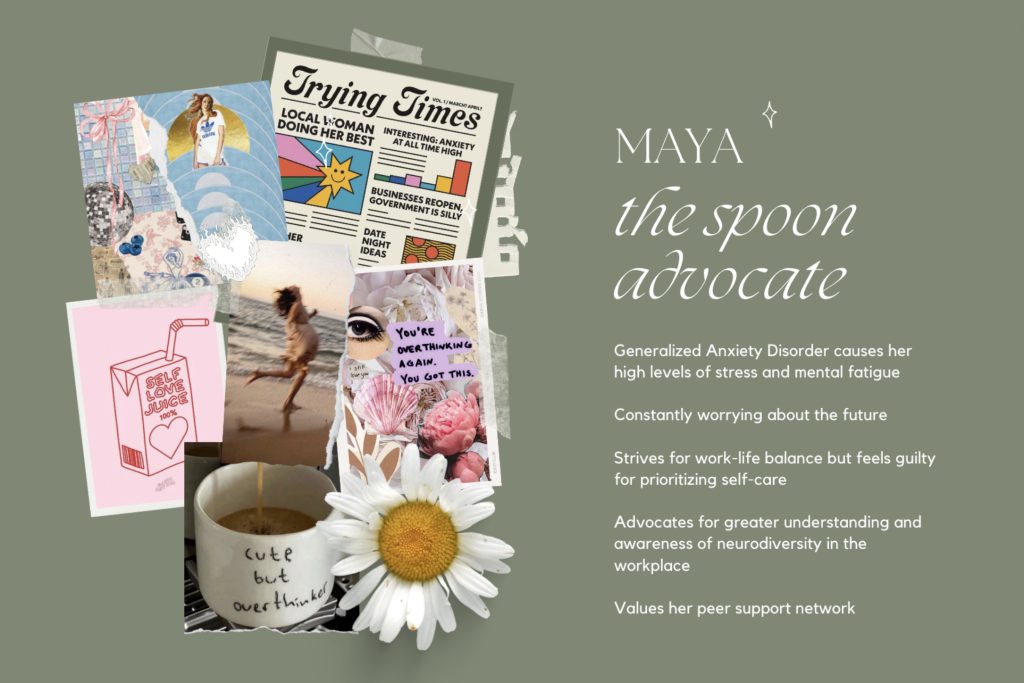
The Spoon Advocate:
Maya can leverage the preset Task Bank to select tasks that align with her energy levels, empowering her to make informed decisions about how to allocate her spoons.
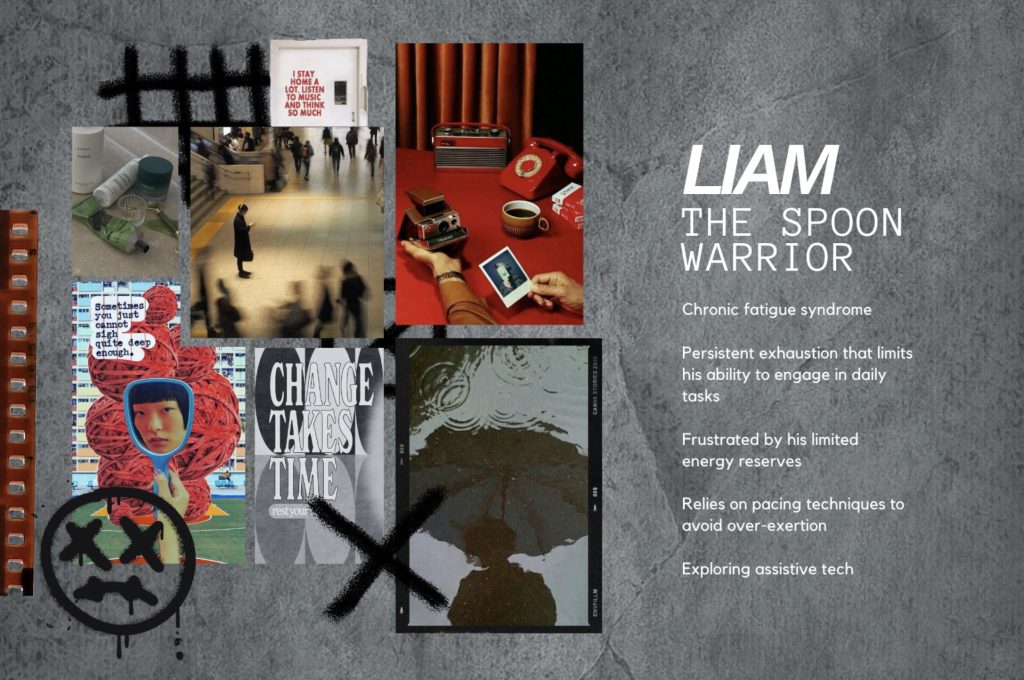
The Spoon Warrior:
By incorporating behavioral activation tasks, Liam can combat the feelings of depression associated with his chronic fatigue.
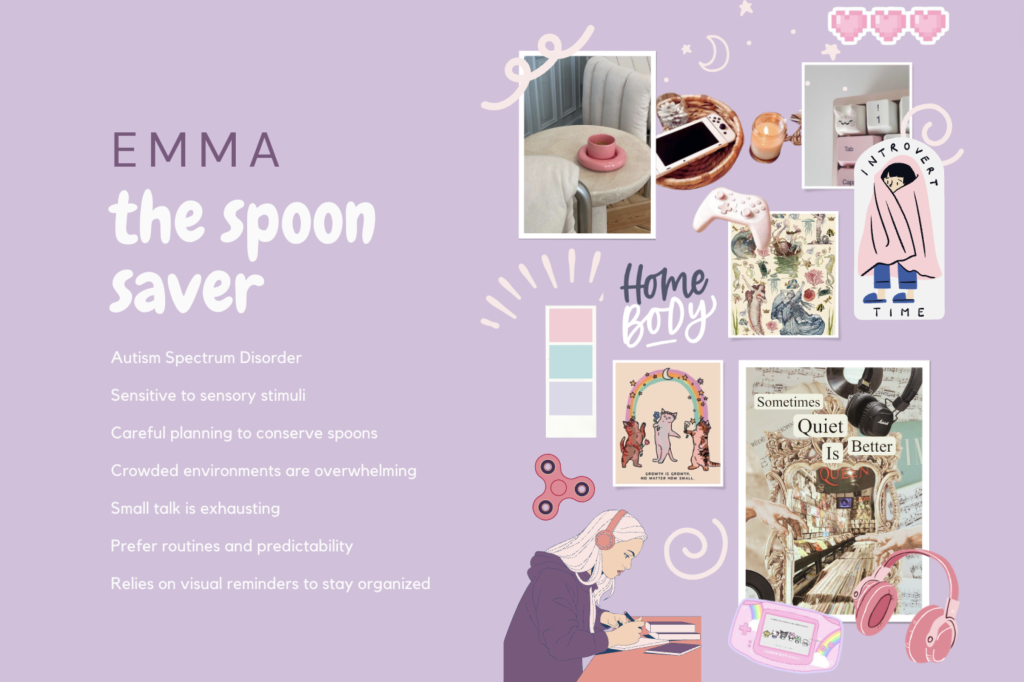
The Spoon Saver:
Emma’s need for flexibility and autonomy is supported by the adaptive features, enabling opt for simplicity during times of sensory overload.
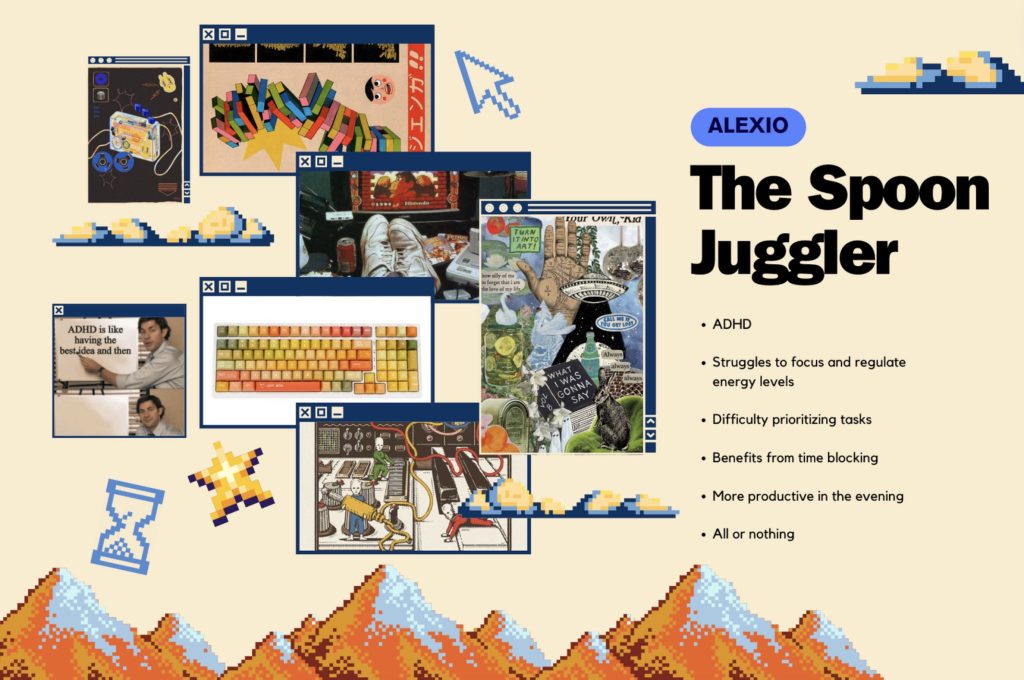
The Spoon Juggler:
Proactive notifications and reminders help Alex stay on track with his goals despite his tendency to get distracted.
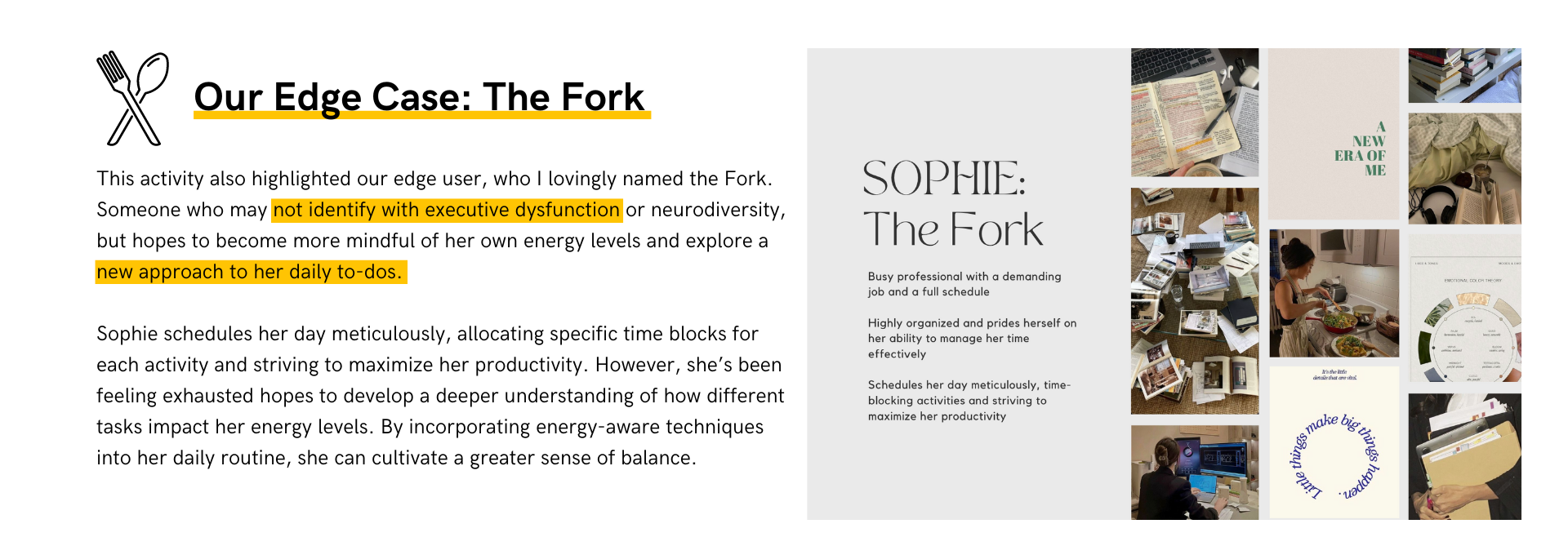
Proposed Future Scenario:
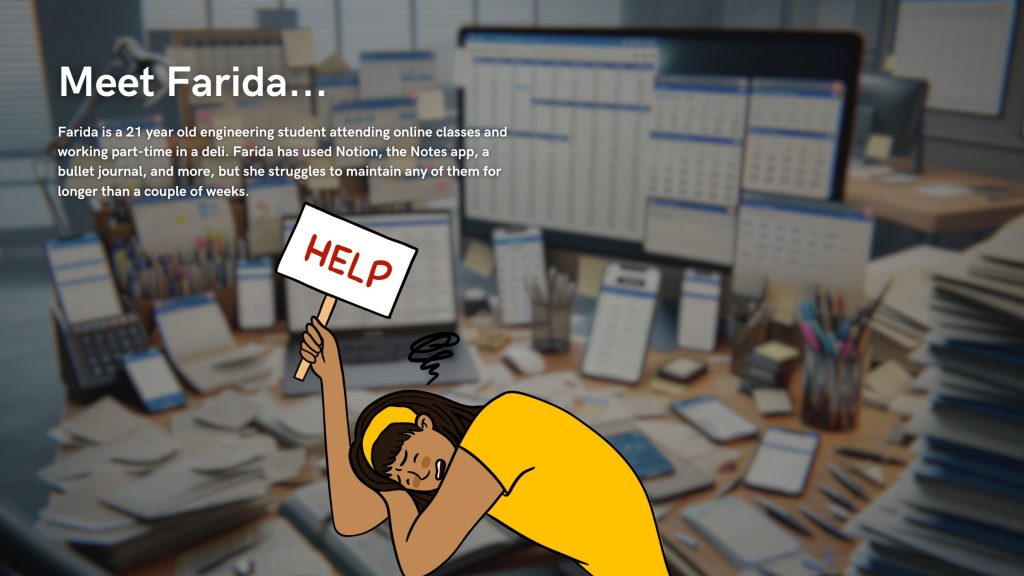
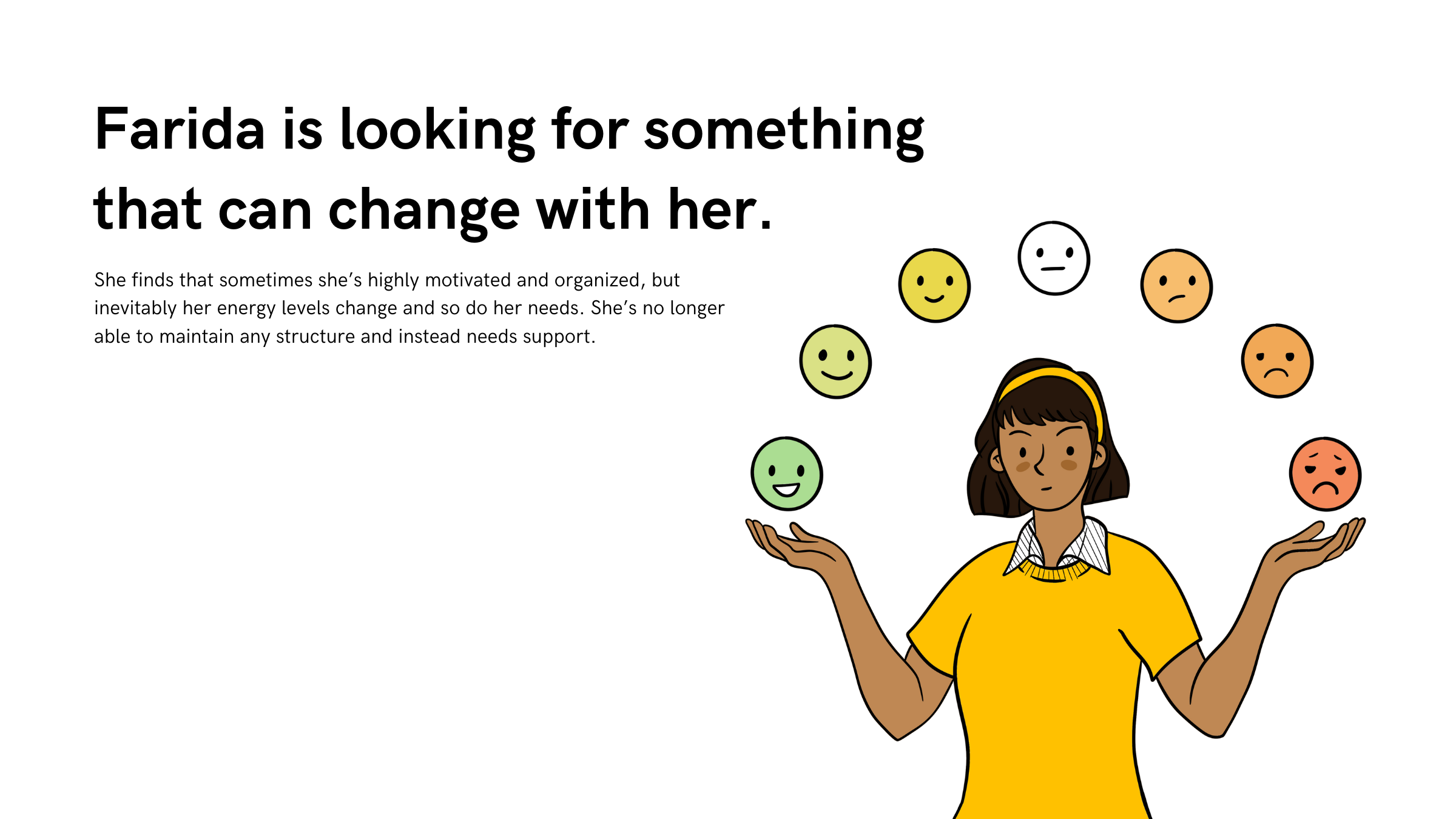
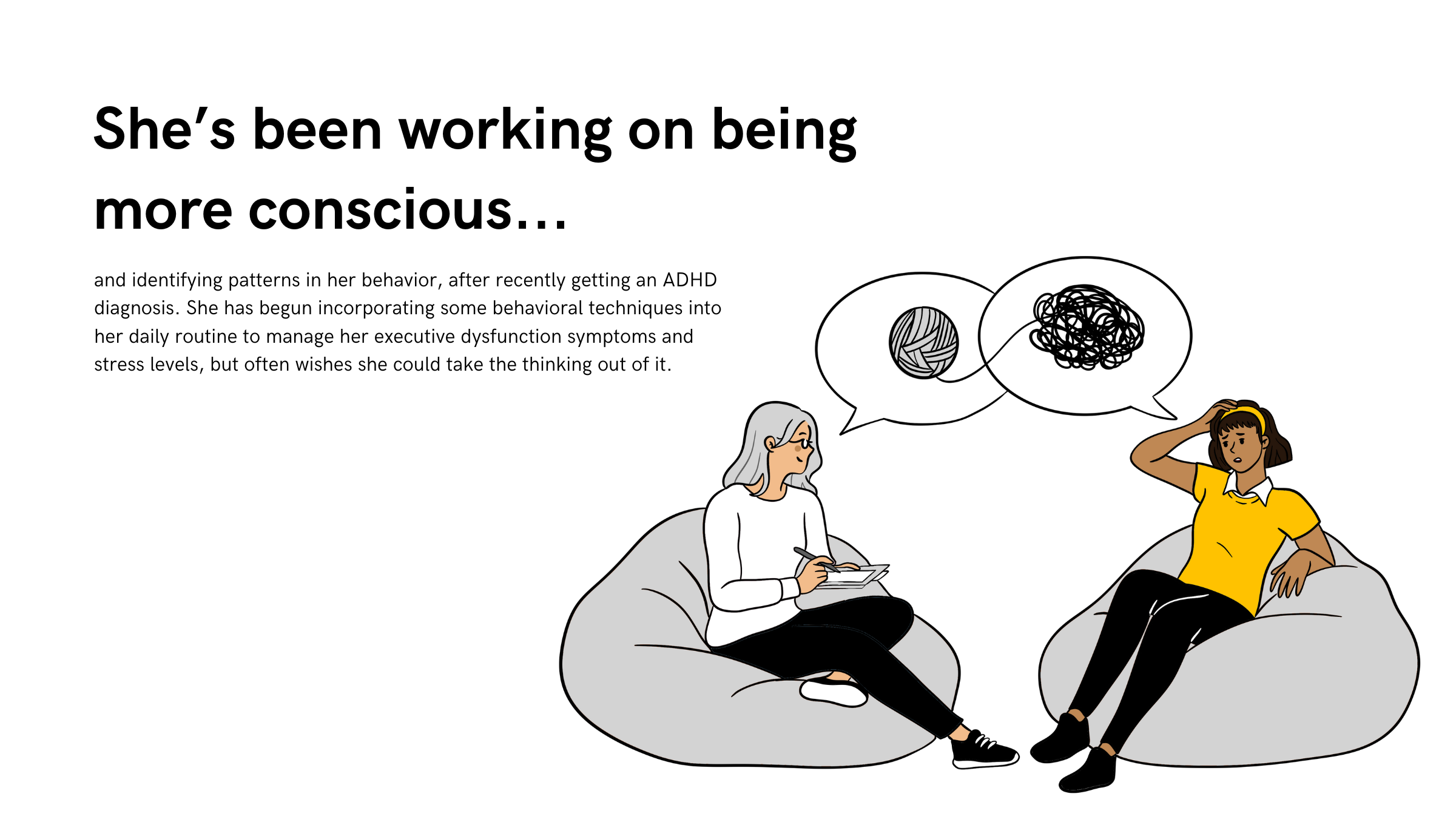
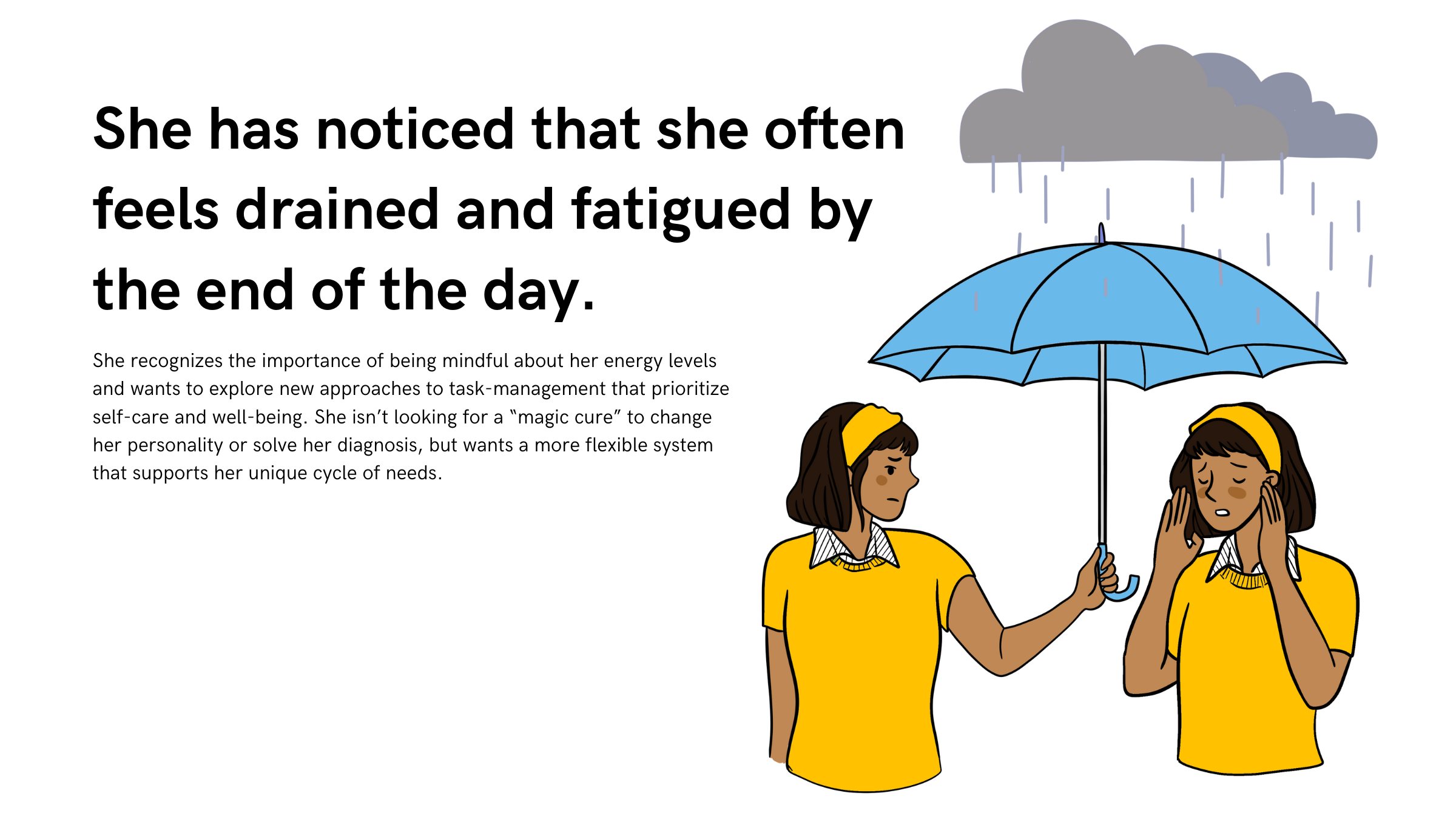
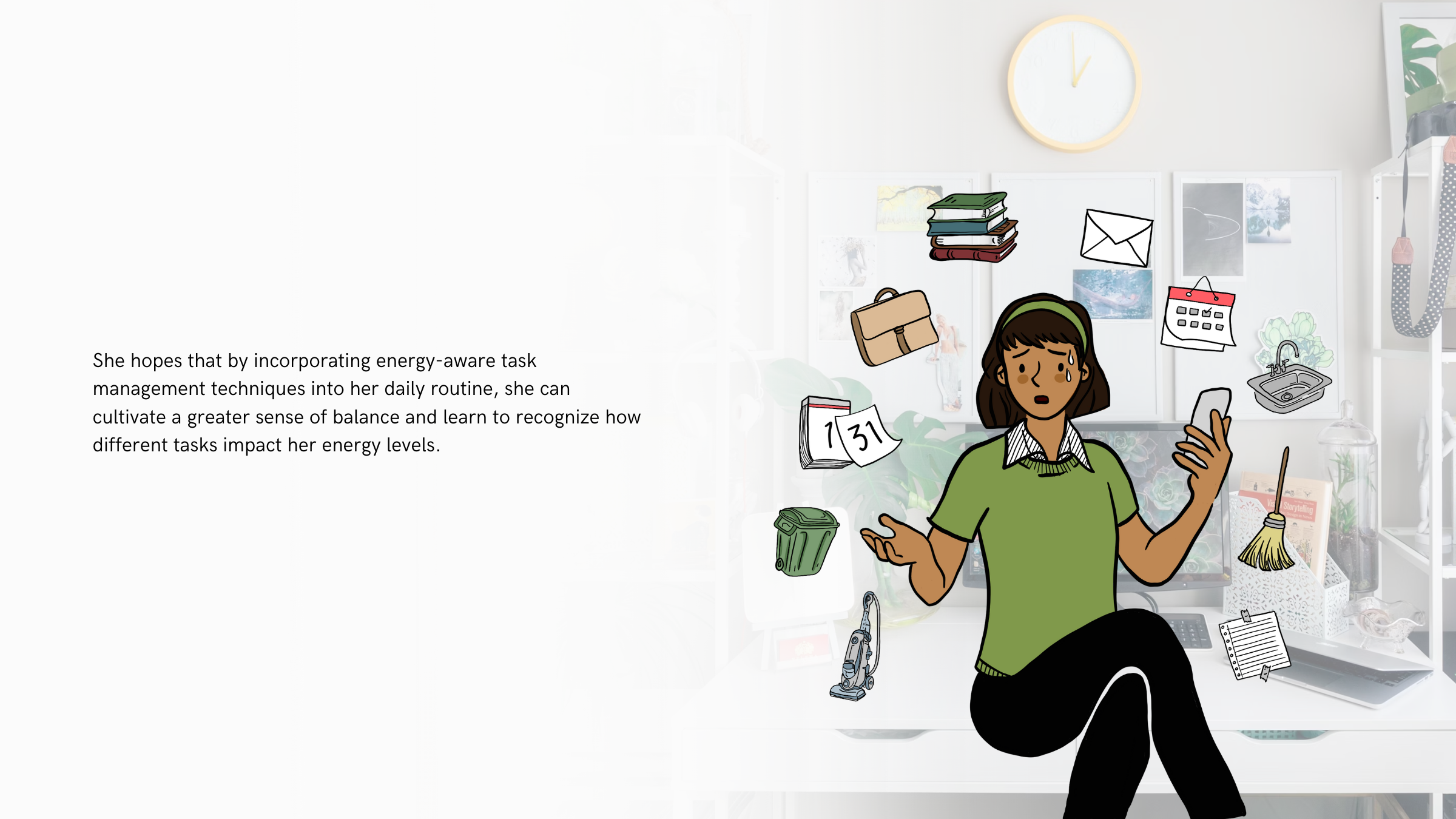
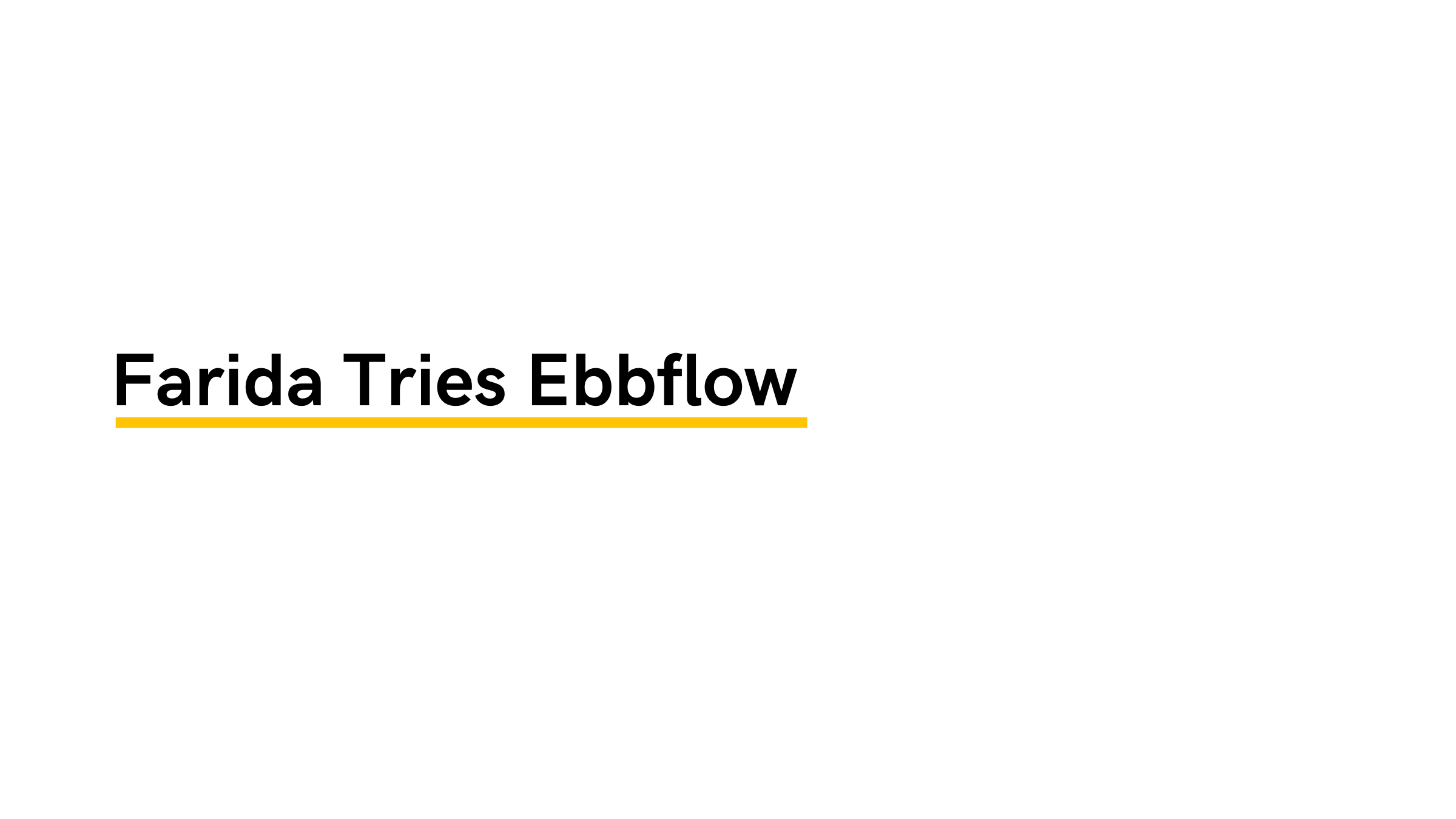
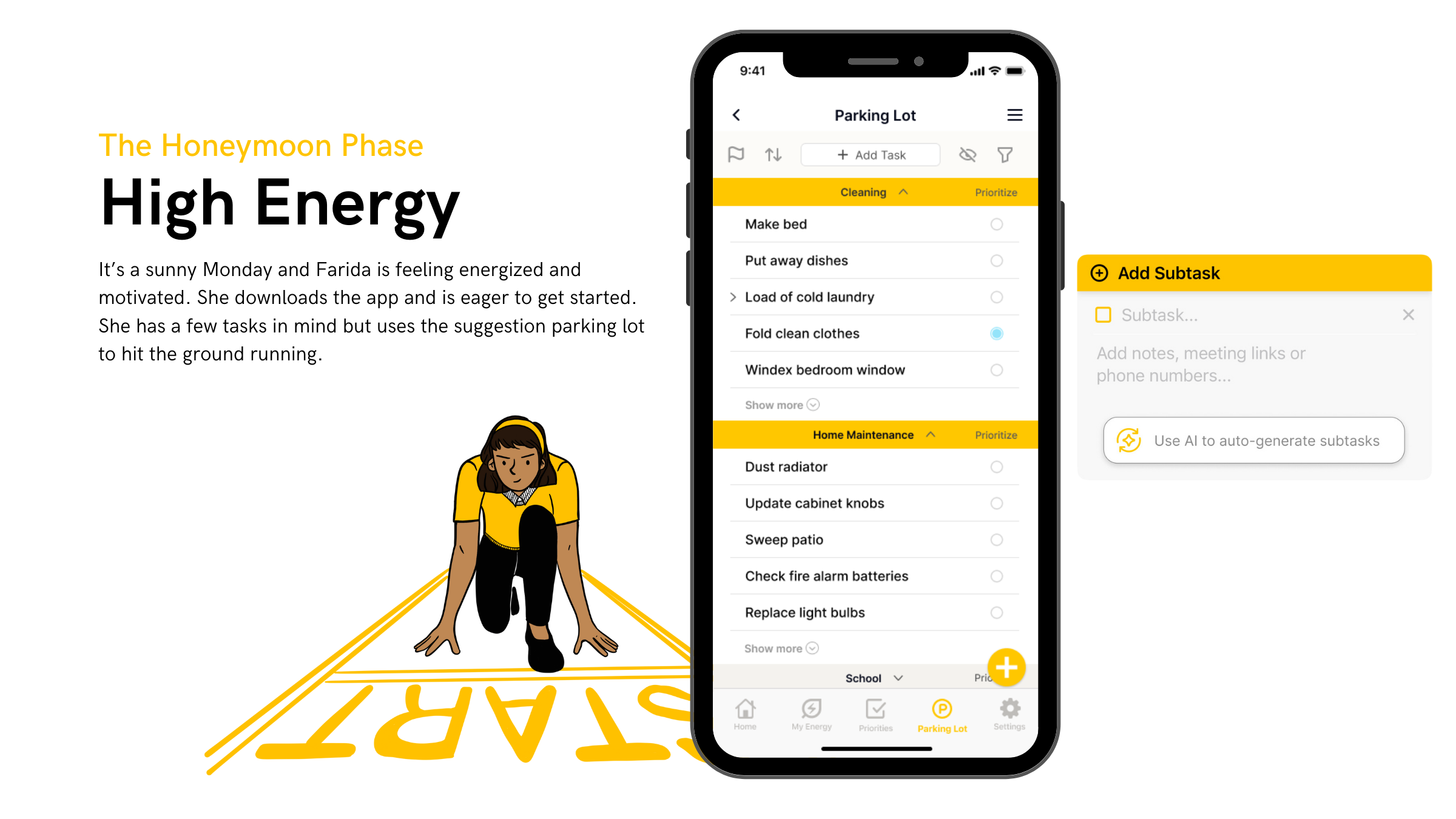
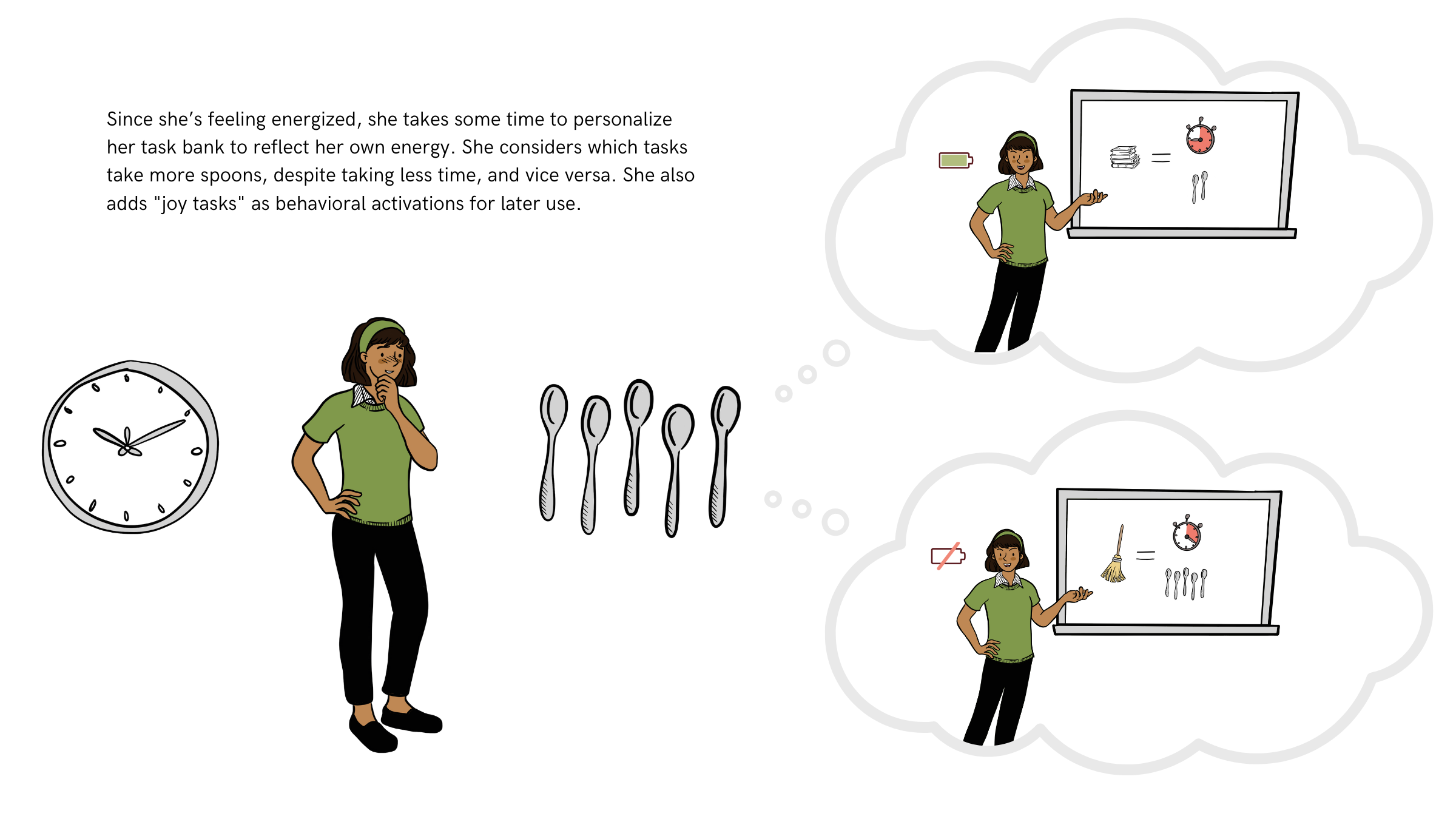
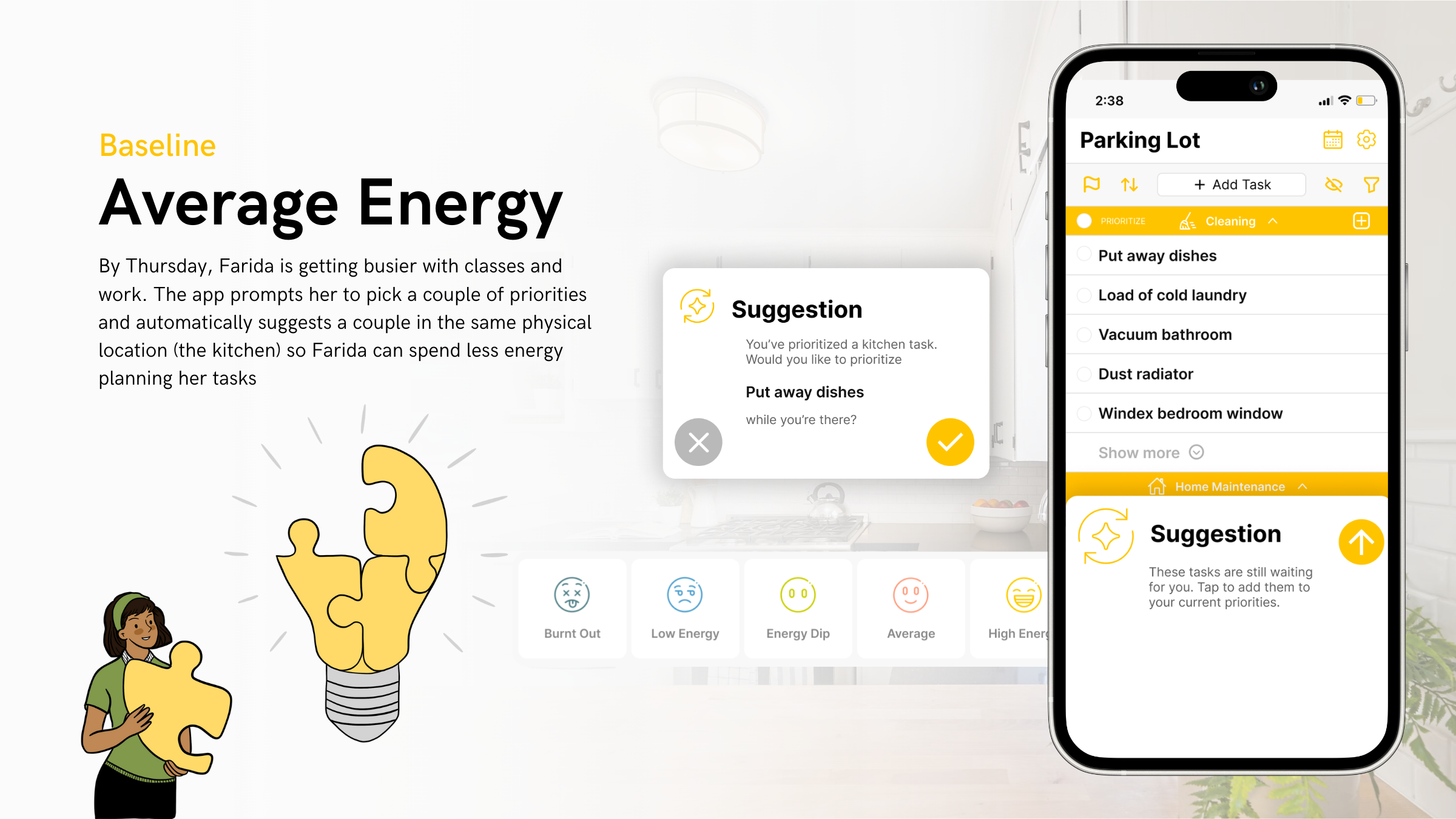


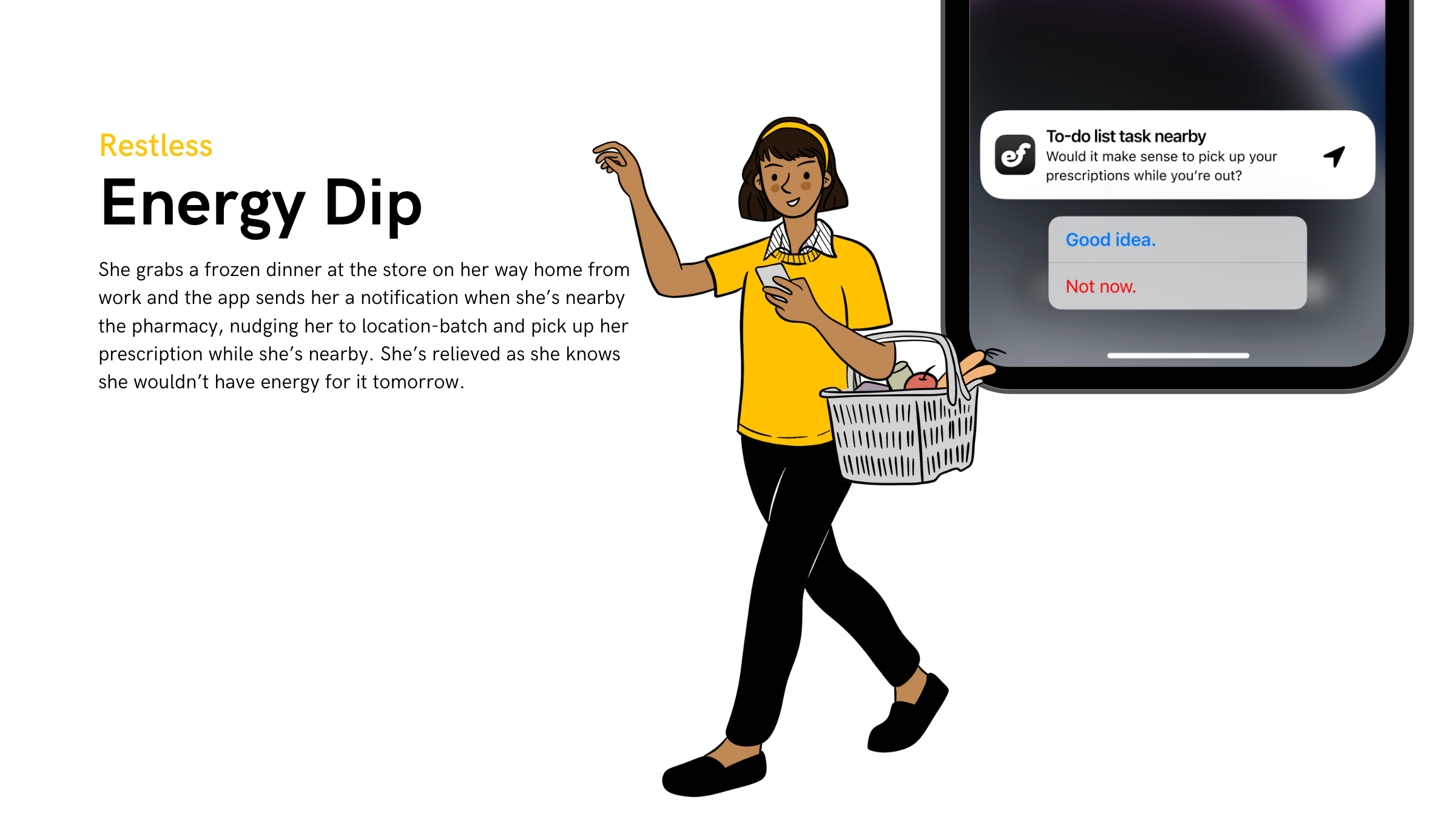

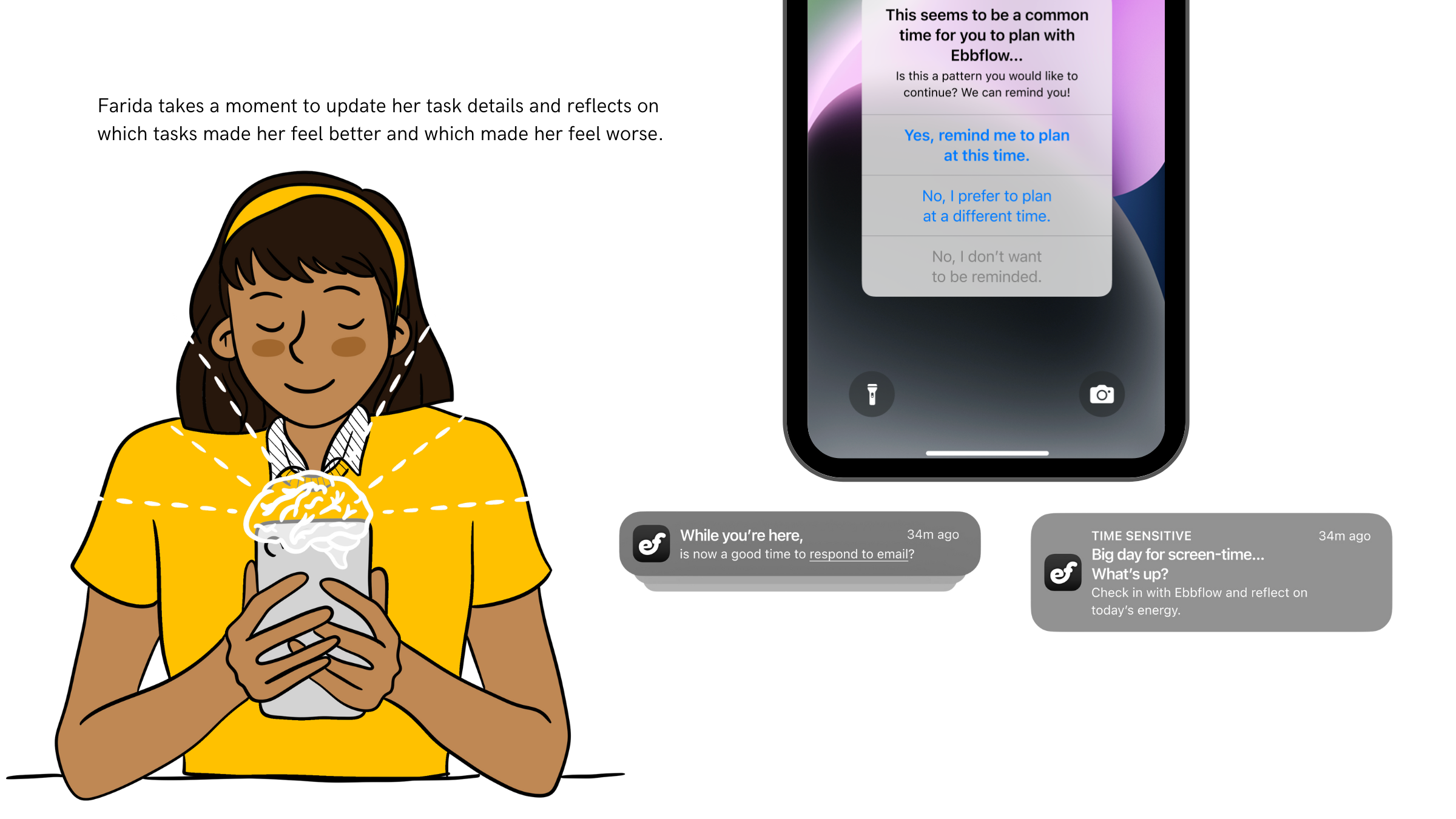
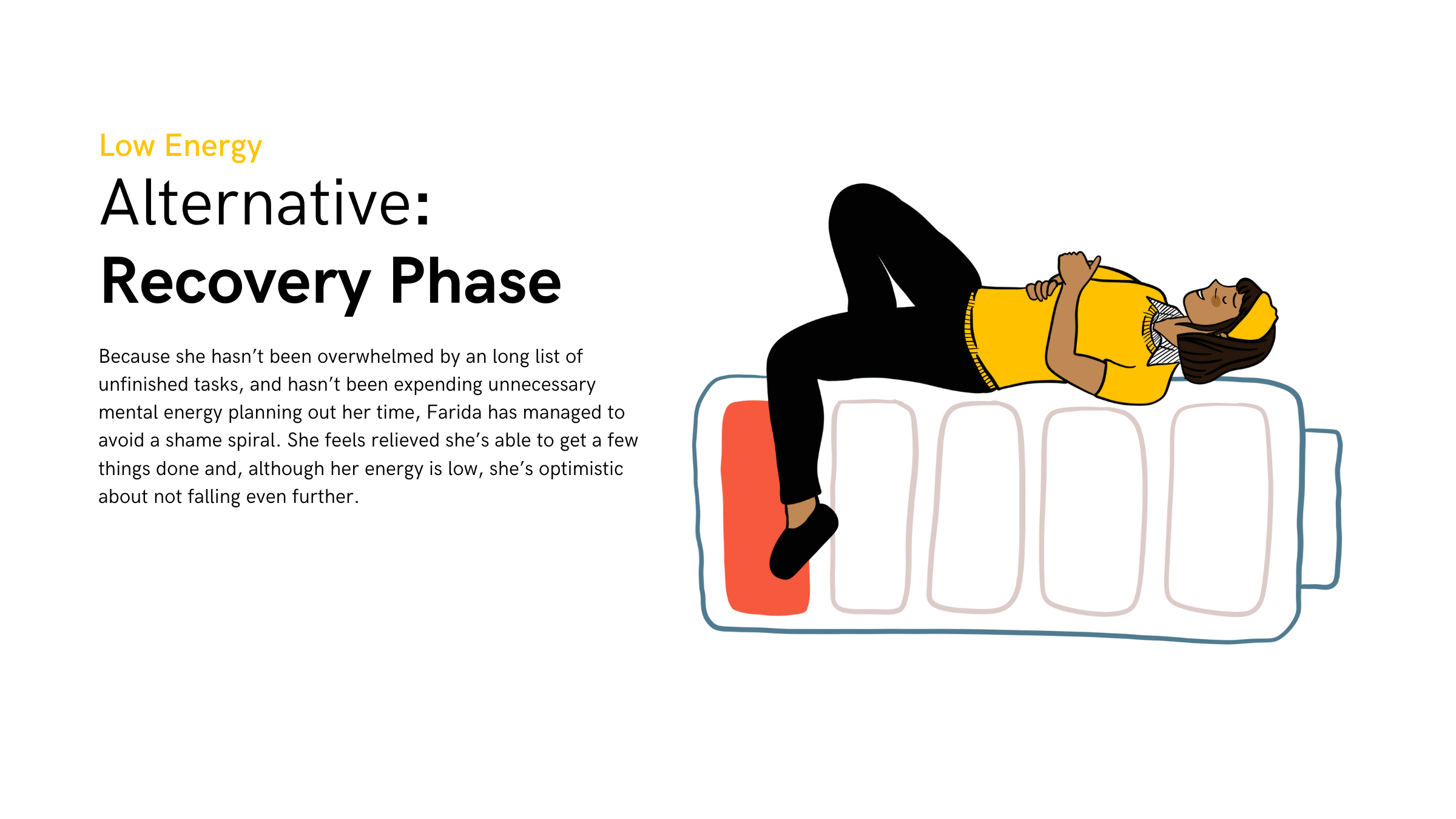
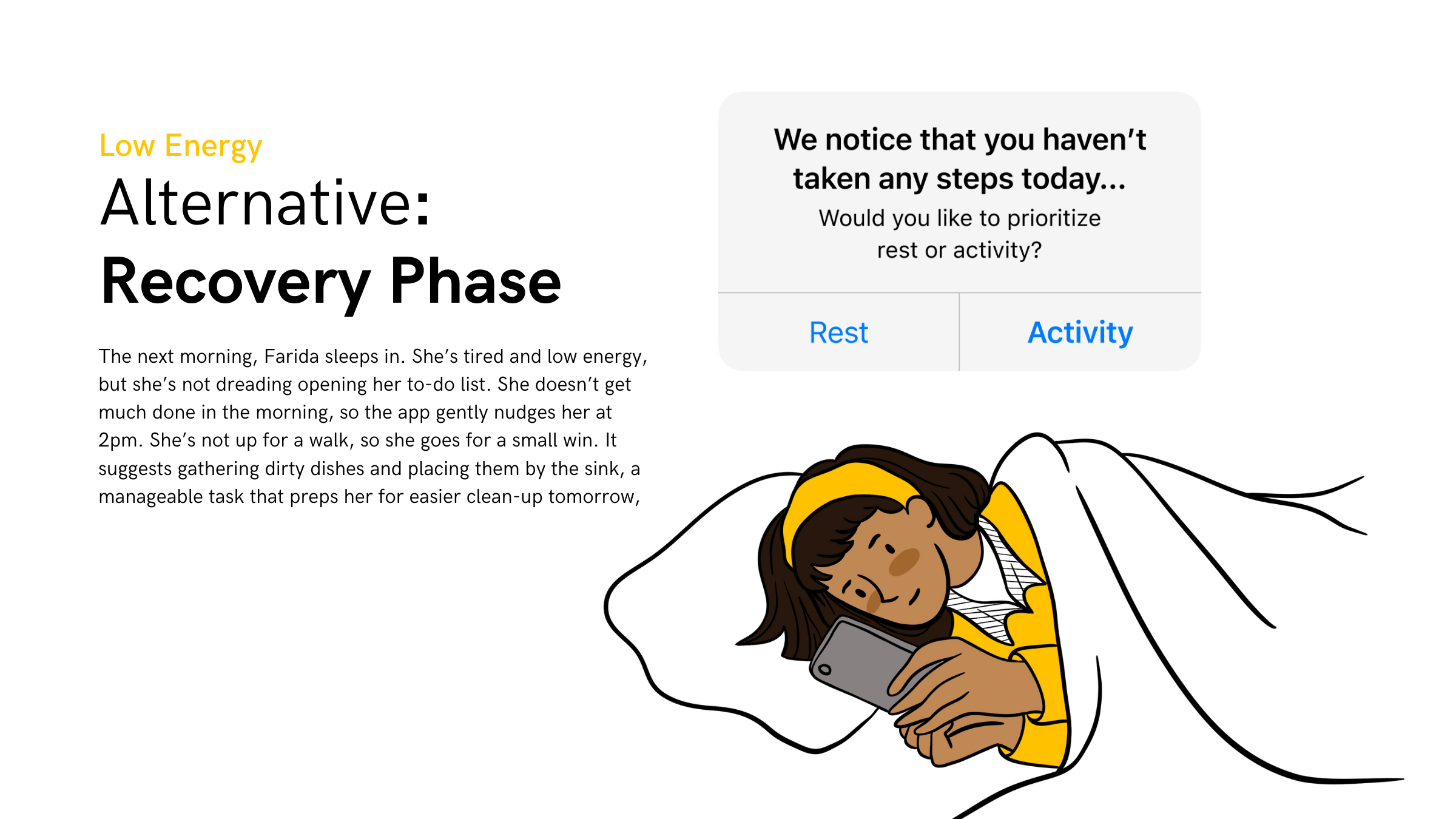
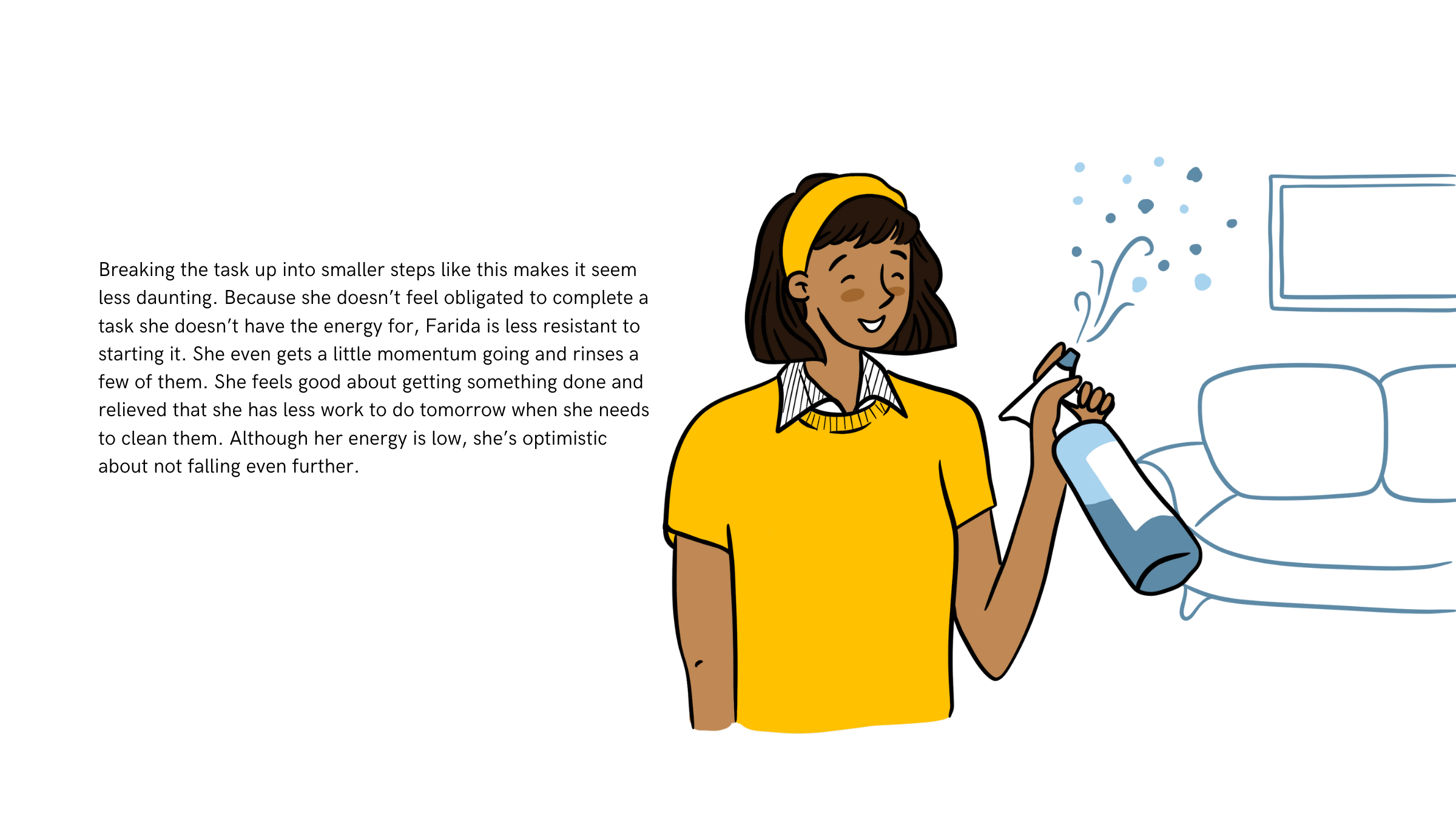
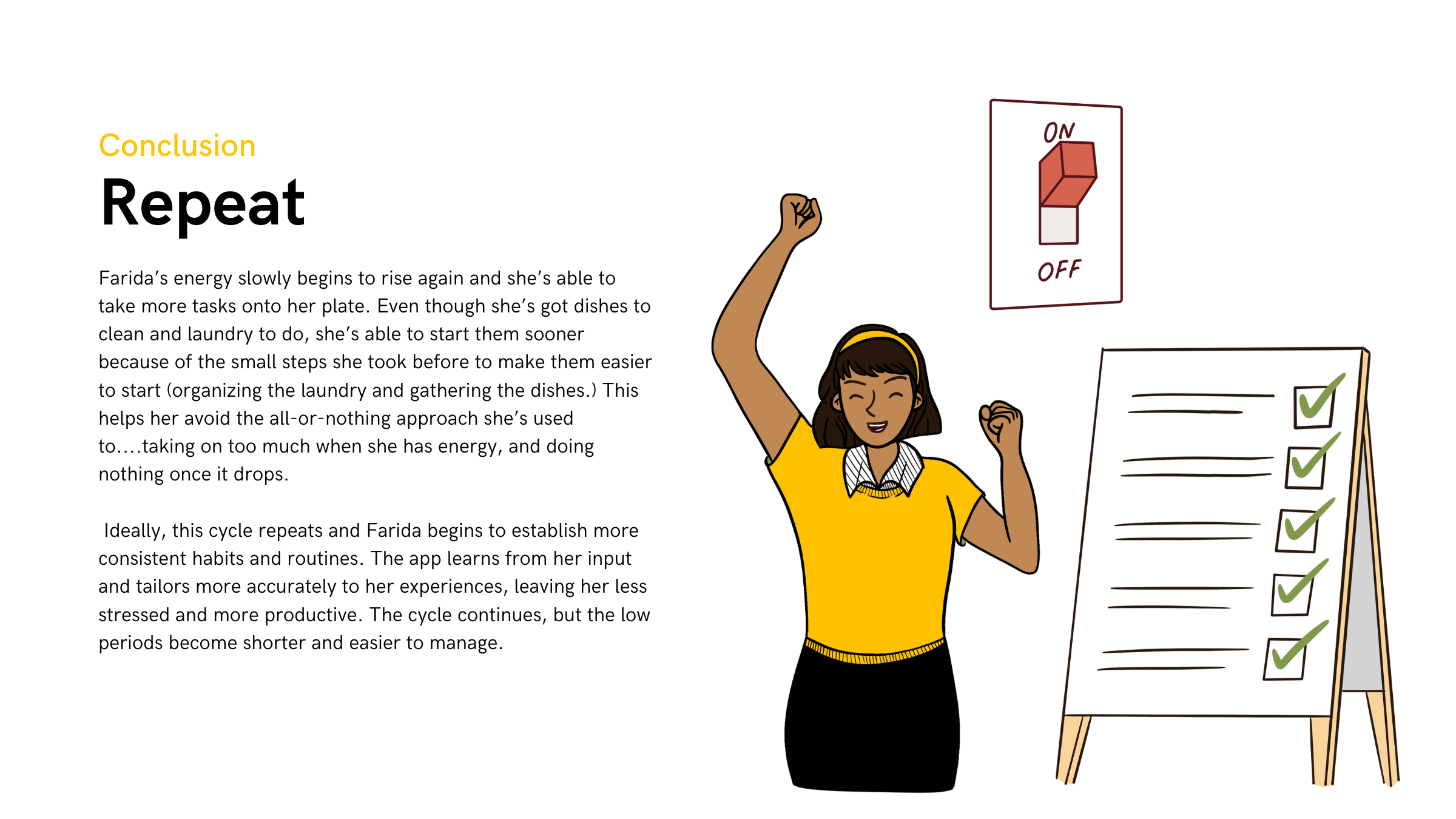
Resources
Images + Illustrations from Canva (some re-drawn) unless otherwise specified
Brown, M. (2023). From disruption to disruptor, leveraging neurodiverse leaders. LinkedIn. https://www.linkedin.com/pulse/from-disruption-disruptor-leveraging-neurodiverse-leaders-brown/
Rusu, C., Valencia, K., & Botella, F. (2022). User Experience Factors for People with Autism Spectrum Disorder. Applied Sciences. https://www.researchgate.net/publication/356013784_User_Experience_Factors_for_People_with_Autism_Spectrum_Disorder
Mba, J. C. P. P. (2024, February 6). 8 Illuminating Insights into ADHD: Making sense of your brain. ADDitude. https://www.additudemag.com/understanding-adhd-insights-challenges-solutions/
Kao, D. (2021, December 16). UX Neurodiversity Network: Designing an inclusive UX to combat marginalization in hiring creatives. Medium. https://bootcamp.uxdesign.cc/ux-neurodiversity-network-co-designing-an-inclusive-user-experience-to-combat-marginalization-of-eddc0f886b60
Hewitt, J., British Standards Institute. (2022). Design for the mind – Neurodiversity and the built environment – Guide. https://www.housinglin.org.uk/_assets/Resources/Housing/OtherOrganisation/Design-for-the-mind-Neurodiversity-and-the-built-environment-Guide.pdf
Neurodiversity in the workplace: my pledge for anticipatory inclusion. (2021, August 19). Elisabeth Goodman’s Blog. https://elisabethgoodman.wordpress.com/2021/08/13/neurodiversity-in-the-workplace-my-pledge-for-anticipatory-inclusion/
Grabowski, S. (Design for neurodiversity | Adchitects Blog. (n.d.). https://adchitects.co/blog/design-for-neurodiversity
Bush-Moline, B. (2021). Harmonizing the seen and unseen when designing for neurodiversity. (n.d.). https://www.stantec.com/en/ideas/topic/buildings/harmonizing-the-seen-and-unseen-when-designing-for-neurodiversity
Kao, D. (2021, December 16). UX Neurodiversity Network: Designing an inclusive UX to combat marginalization in hiring creatives. Medium. https://bootcamp.uxdesign.cc/ux-neurodiversity-network-co-designing-an-inclusive-user-experience-to-combat-marginalization-of-eddc0f886b60
Philips, M. (2017, February 2). Anticipatory Design: How to create magical user experiences. Toptal Design Blog. https://www.toptal.com/designers/product-design/anticipatory-design-how-to-create-magical-user-experiences
Time & productivity. (n.d.). ADDitude. https://www.additudemag.com/category/manage-adhd-life/getting-things-done/time-productivity/
Applied Behavior Analysis Programs Guide. (2023, August 11). The visual schedule for students with autism. https://www.appliedbehavioranalysisprograms.com/faq/what-is-visual-scheduling/
Moss, H. (2023, June 1). Time management tools for neurodivergent individuals | LinkedIn. https://www.linkedin.com/pulse/time-management-tools-neurodivergent-individuals-haley-moss-esq-/
Grace, K. (2023, April 11). A brief and thorough primer on the terms NeuroDivergent, NeurDiversity, and NeuroDivergnce. Medium. https://katherine-grace.medium.com/what-does-neurodivergent-even-mean-b6bdb83b69b2
Time management for the neurodiverse – differently wired. (2017, September 6). Differently Wired. https://differentlywired.co.uk/time-management-neurodiverse
W, R. (2019, September 10). Successful time management for the neurodiverse. Little Coffee Fox. https://littlecoffeefox.com/successful-time-management-for-the-neurodiverse/

